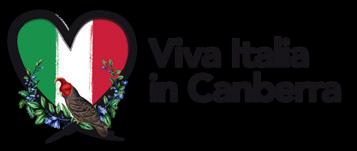




























FINAL WEEKS












ANCIENT TREASURES AND IMMERSIVE EXHIBITION
On show unitl 4 May 2025

































































ANCIENT TREASURES AND IMMERSIVE EXHIBITION
On show unitl 4 May 2025























By Elizabeth KOVACS

For graphic designer Tracy Hall, street art is like any artwork, her canvas has been swapped out for fences and plywood, her medium changing from watercolours to spray paint.
A Canberra resident for 13 years, Tracy has been a street and mural art ist for the past five.
Her first exploration into grandscale painting was at the Point Hut toi lets in Banks five years ago. “They had just finished doing up the playground area for all the little kids and the words [of graffiti] that were coming up weren’t family friendly,” she says.
“So I ended up drawing this design and I got approval for the artwork.”
Many of Tracy’s time-consuming artworks are free, with thousands of her own dollars put into paint.
“I live in this area, and I couldn’t stand seeing what was there,” she says.
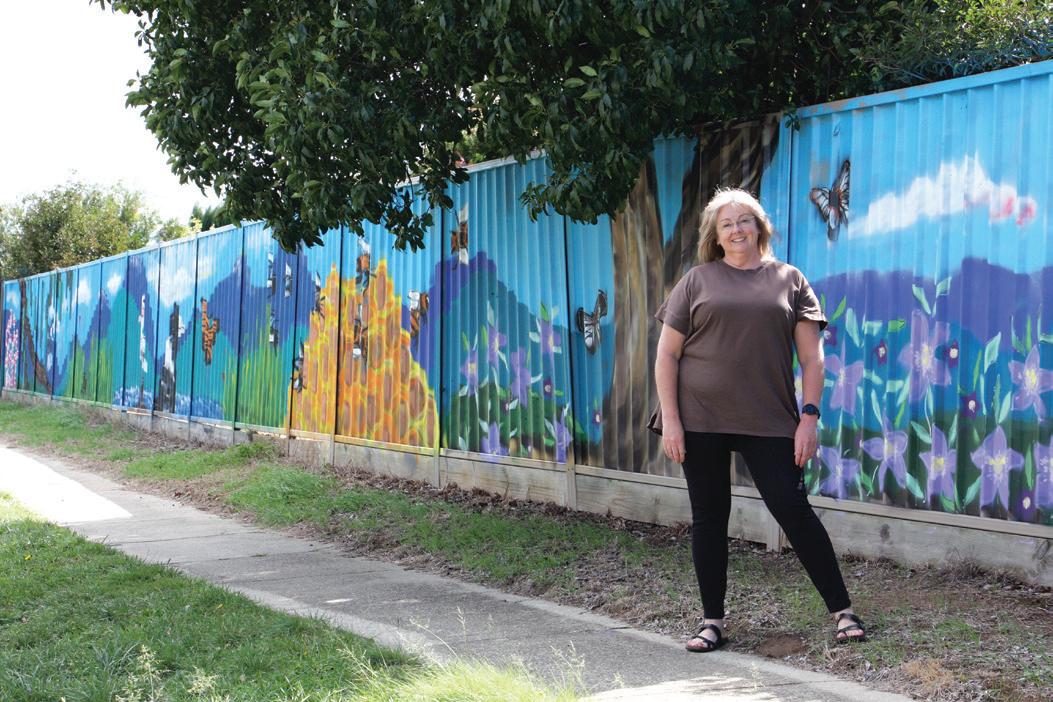
“I really love painting, it’s a great opportunity to do what I love.”
Tracy’s love of art began in life drawings at a young age and, working professionally as a graphic designer, she continues to explore different mediums of art.
Arts & Entertainment 23-25
Crossword 27
Dining & Wine 25
Gardening 26
Letters 10-11
News 3-12
Politics 4, 8
Streaming 22
Sudoku 27
“One lady had me in tears,” she says.
“Her daughter passed away not long ago and they had been watching [the artwork progress].
“She came up to say ‘thank you for giving us a bit of joy and happiness’.
“I told her that I didn’t think I did
are some of her biggest supporters, although they are needed to sometimes pull her away from the allure of a new project on the street despite already being knee deep in another.
“I think my son is a little sick of us driving past the murals,” she says.
Since 1993: Volume 31, Number: 15
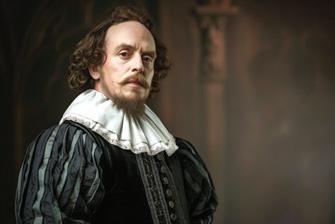
General manager: Tracey Avery, tracey@citynews.com.au
Senior advertising account executive: David Cusack, 0435 380656
Advertising account executive: Damien Klemke, 0439 139001
Editor: Ian Meikle, editor@citynews.com.au
Journalist: Elizabeth Kovacs, elizabeth@citynews.com.au
Arts editor: Helen Musa, helen@citynews.com.au
Production manager: Janet Ewen
Distribution manager: Penny McCarroll
deal with it.
“You take the avenue of punishment and try to find whoever’s doing it, or you try to engage and create a beautiful space that possibly will lead to some of the people that are tagging to maybe get on board and actually do
some nice artwork instead.
“If I’m challenging the community to see [street art] in a different light, then I’ve got to get on the other side and get the kids, or whoever else is tagging, to change their art to have a positive effect.”
Tracy’s art has reached schools across Canberra and she has been invited to teach art students how to work with spray paint, often inviting keen students to come and help with her murals.
Her latest project is one of Canberra’s longest street art installations, taking more than 75 metres of fencing along Woodcock Drive in Gordon.
The artwork, featuring a kookaburra, magpie, butterflies and bees, already takes up 75 metres, each 25 metres using $2000 worth of spray paint.
Tracy says the hardest part is finding the money for paint.
Receiving support from local MLA Caitlin Tough, Tracy has started a GoFundMe page to help her with the cost of spray paint and safety equipment.
“Getting supported by the community I’m supporting is a super special continuous cycle,” says Tracy.
“It helps me get ready for the next 25 metres of painting, where I’m hoping to paint an owl!”
Donate to Tracy’s painting costs at gofundme.com/f/gordon-fence-secondmural-next-door
KJB Law draws on decades of
Mitchell assists with:
• Wills and Testamentary Wills
• Powers of Attorney
• Self-managed super funds
• Advice on potential claims against estates
• Advice for blended families



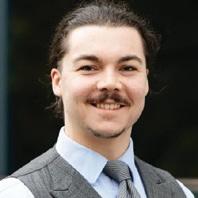

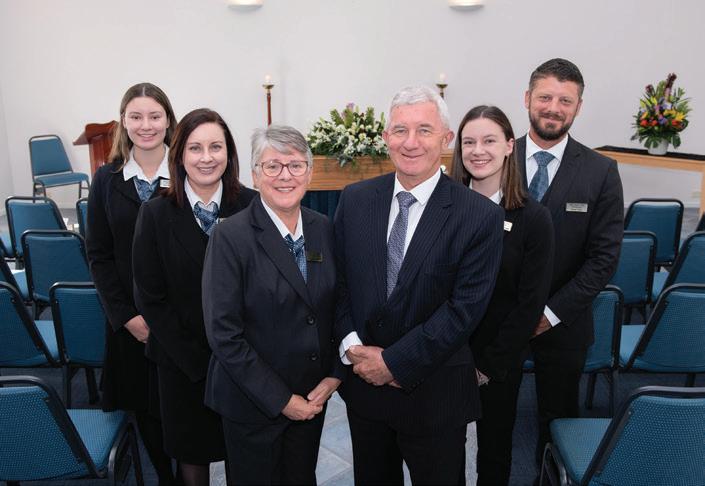
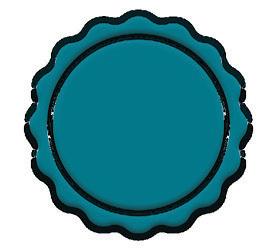
Ask any candidate who talks to you what three tangible things they will do to make your life better.
Let’s give them one on broad issues: so, for those on the left this is usually climate change; on the right, the economy or being safer in some way.
The next two need to be actual tangibles linked to issues that are affecting us. This is where the power of incumbency provides a massive advantage, assuming they’ve been effective. A party in government can demonstrate tangibles everywhere and provide even more.

If you’ve engaged with the electorate correctly, then these tangibles should be very direct and specific. So, $25 on PBS. Or tax cuts which will give you $500 a year. Or more bulk billing. Or batteries (still expensive) for the solar panels on the roof.
Throw in some very localised tangibles, such as shiny new buildings co-announced with the (hopefully) friendly local government, and now your candidates have plenty of talking points on tangibles.
But notice the way the message is delivered here. Like retail marketers, dollars off to distract from any real cost of the tangible. Not a mention of percentages.
is doing tangible. Percentages. If I asked what would you prefer, 15 per cent off something that you don’t really know the figure on (could be more or less) or $500? A tangible in the hand is worth two weeks of campaign narrative.
So much of tangible delivery depends on clarity on messaging. Simplicity so it can be easily digested. Or when you are in a leaders’ debate. It’s a subtle difference, but it is a difference and one that is noticeable in this campaign.
The Coalition just hasn’t had enough simple tangibles to get the momentum back that was won over summer. This is the disadvantage of
It’s still a close election. It’s still amazing that Dutton has got this close so soon. But the tangible in all of this is that a few percent is all there is between oblivion and reward.
being a small target for too long – people don’t believe your promises when you do make them in a campaign because (a) you are a politician, (b) you are behind on the polls and (c) why now?
People want immediate as well with the tangible. Energy subsidies tick that box, but cost of living and greed has seeped into everything now.
PBS ticks that box. For both sides. The Coalition needs differentiation. To be like Trump, who made a promise not to tax those on social security or tax income from tipping, and do something “so Labor” that they wouldn’t say no, but claim ownership of. Dental in Medicare would have done that.
In Australia it is nuts we don’t have it considering its importance, yet also the figures show how many of us can no longer afford to see a dentist. The Greens got there first though, but still, it gets momentum and narrative back. Tangible and immediate ticked. Plus it appeals to the moderate liberal vote.
“Immediate” in campaigns also can have a different, darker dimension. It’s that external factor that dominates a campaign narrative regardless of how hard you try to get some space. Trump’s tariffs will be that in 2025.
In 2001 Howard got 2001. Goodnight Beazley who until then had been ahead on all poll metrics. 2010 Gillard got the GFC, which blunted the spill on Rudd.
You can’t stop these things but knowing they could happen, and having the tangibles announced early helps. It lowers risk and uncertainty in a world that is anything but.
In a way, Labor has borrowed Howard’s 2001 campaign strategy, using the appeal of lowering your risk and uncertainty by voting for what you know will definitely happen, not what may.
It worked in 2001 for the same reasons it will in 2025: a hard-working and financially stressed middle wants something that gives them a bit more oxygen. Call it middle-class welfare. It works.
And to be clear, Labor isn’t running a spectacular campaign. They don’t need to be now that momentum is with them. Instead, the Coalition is left with no choice but to take more risks through going bigger on noise, tangibles and immediates. That runs the added messaging risk of framing them as desperate, negative and Trumpists.
It’s still a close election. It’s still amazing that Dutton has got this close so soon. But the tangible all of this is that a few percent is all there is between oblivion and reward.
Dr Andrew Hughes lectures at the ANU Research School of Management, where he specialises in political marketing.
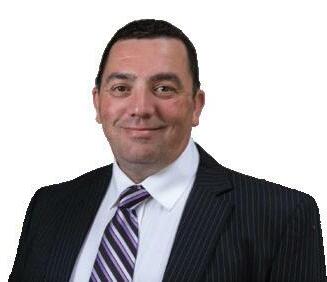

•
• Existing clubhouse and
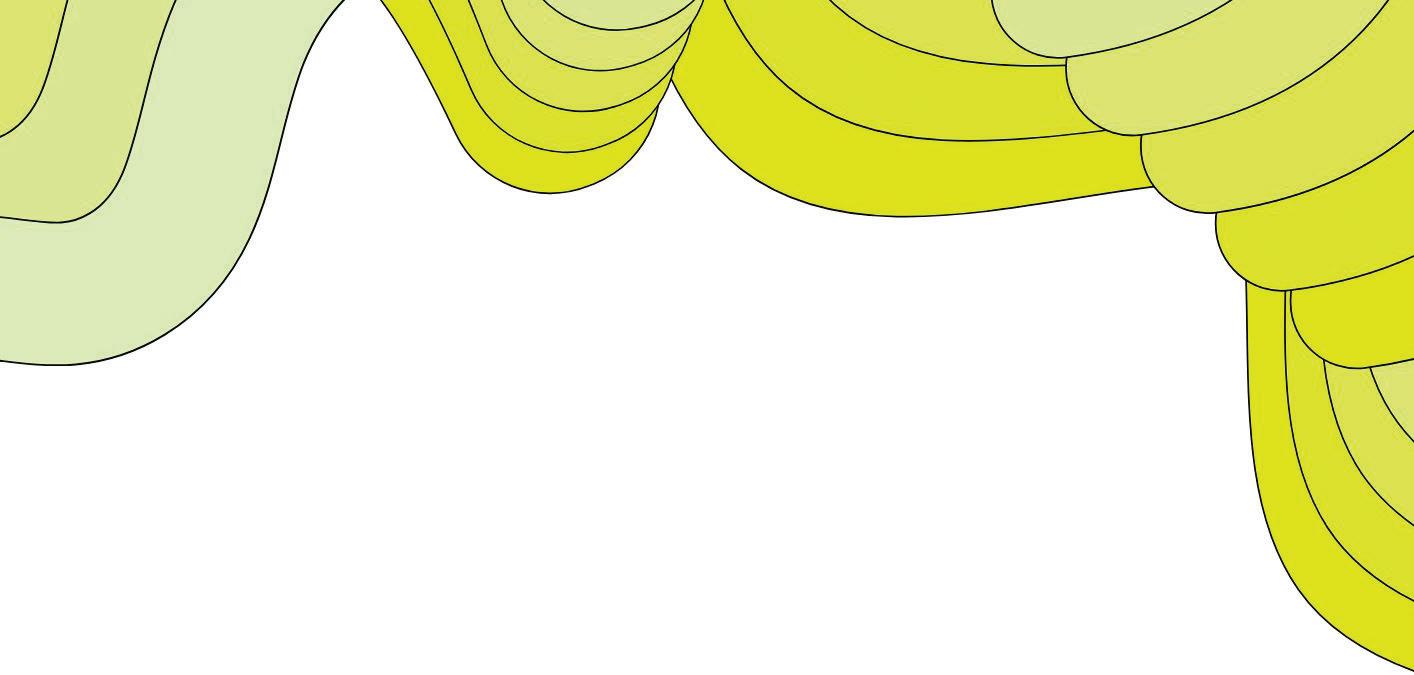
ARTHRITIS ACT JUVENILE ARTHRITIS INFORMATION DAY JOINS
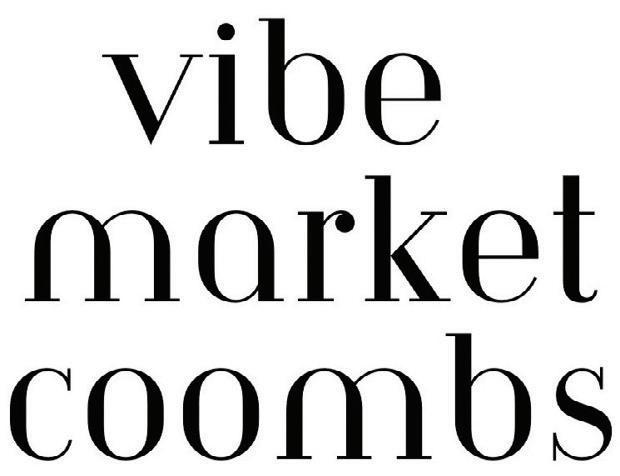
SUNDAY MAY 4 • 9AM TO 1PM
COOMBS COMMUNITY CENTRE WOODBERRY AVENUE, COOMBES
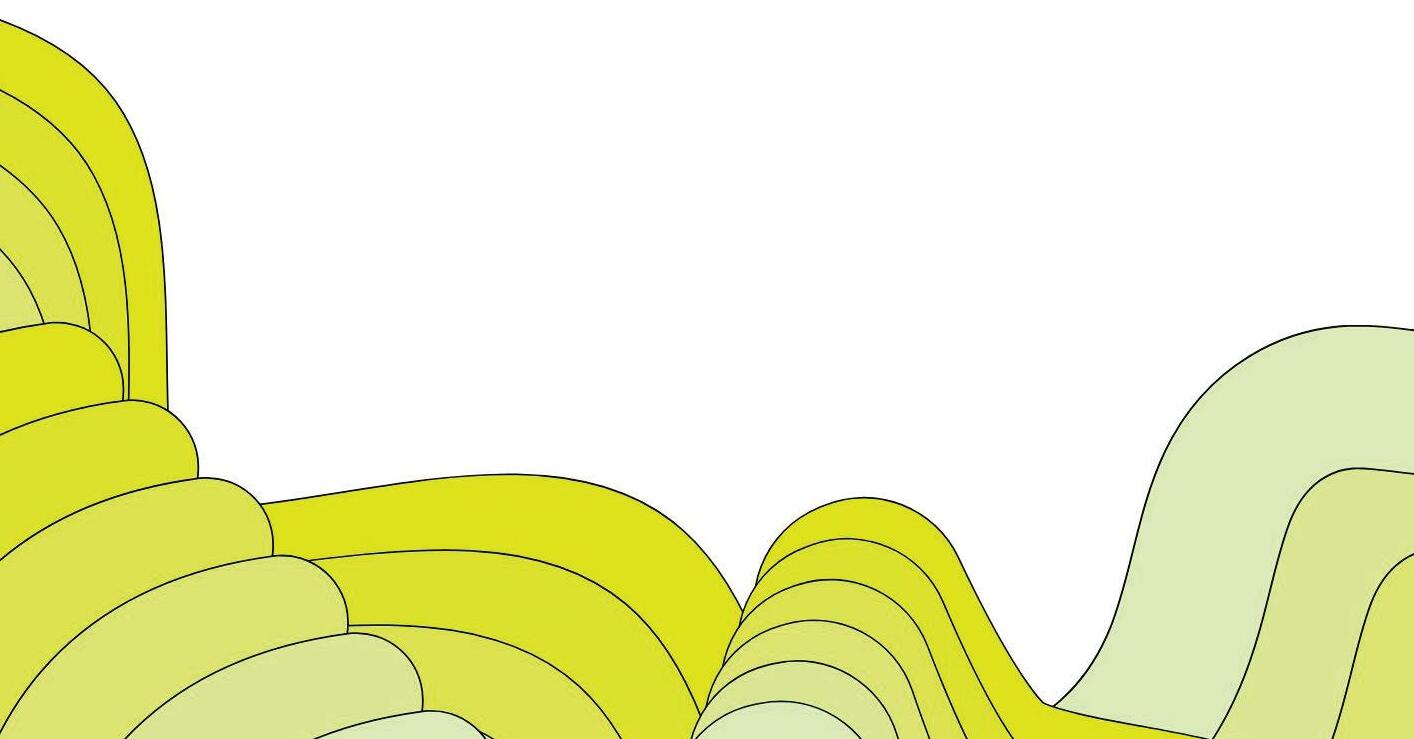
Everyone Welcome • Amazing Stalls
• Specific information for families affected by Juvenile Arthritis
• Information for carers and teachers
FREE FACE PAINTING
COME & ENJOY A GREAT SUNDAY!
By Elizabeth KOVACS

Affecting four to 16 per cent of Australians, eating disorders are a serious mental health condition that involves an unhealthy obsession with eating, exercising or dieting.
Following a similar 12-step recovery plan as Alcoholics Anonymous groups do, Overeaters Anonymous (OA) is a fellowship of members who wish to put an end to compulsive overeating or dangerous dieting and exercising practices.
Founded in 1960 in America by the anonymous Rozanne S, the OA fellowship was established to combat addiction to food.
“It’s not about dieting or coming in and saying ‘oh, you can’t do this and you can’t do that’, or getting on the scales,” says a member from the Canberra group, we’ll call Sam.
“Most of us have spent years trying all of those things before we came in after suddenly realising one day that it isn’t working.”
Despite its title, OA welcomes those suffering with anorexia, bulimia and compulsive overeating or binge eating.
“The name is more historical than
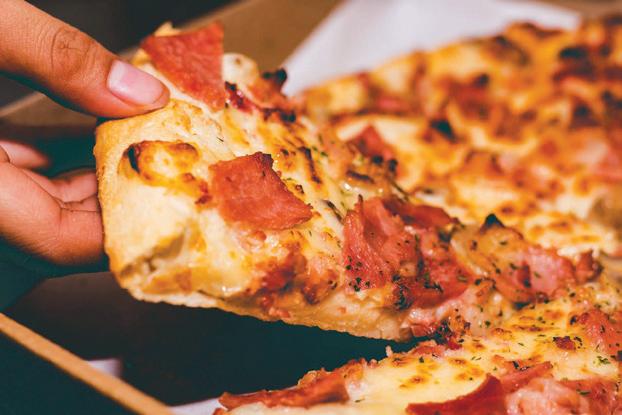
I was starving, I put food in my mouth and couldn’t stop.
“Initially, it was just a survival thing, but it became an obsession.”
“It’s an obsessive disorder.”
Canberra has three places to meet in person each week, with many more online options.
Determining a schedule and frequency of attending meetings is entirely up to the member.
Sam says it’s important to understand that recovery isn’t a linear process.
“It’s a hard concept, but sometimes you need to work on steps one, two and three for the entirety of your life and, sometimes, you might start overeating again,” he says.
struggling while overseas,” says Sam. “I ended up jumping on a Zoom call and talking about my struggles with other members.”
According to Charlie, being part of OA and addressing the obsession is about spiritual, emotional and physical healing.
“Some of us have done huge things to get this disease down to the right size before the program, but found we couldn’t keep to it, so that’s the first step, admitting we’re powerless over food,” he says.
Ultimately, Charlie says OA boils down to freedom. Freedom from food.
“I liken it to having asthma,” says Sam.
“We’ve come to see that this problem with food is a disease we can’t cure ourselves by behaving better, being more self-disciplined or getting our act together,” says
anything,” says another member of the Canberra group, we’ll call Charlie.
“Sometimes you see some random media saying anorexics can’t do well in [OA], but lots of people in the fellowship have anorexia.”
Ultimately, members of OA are united in their unhealthy relationship with food.
“It’s hard when the thing you’re addicted to is something you are still required to consume every day,” says Sam.
“If it was any other addiction, such
as alcohol or drugs, it would be possible to go without, but it’s a little harder when it’s something you have to continue to monitor each day.”
“We take each day one step at a time,” says Charlie.
Recovery from an eating disorder isn’t a black or white case.
“As a teenager, I chronically under ate and restricted my food, and the binging was like being underwater for too long and coming to the surface,” says Sam.
“As soon as I got to the place where
“My first step was understanding [that I had a disease] and coming out of the denial that I had.”
The fellowship has a strict “no opinion on outside issues” rule, preferring to see each member as an equal regardless of status and opinion in the outside world.
“We’re also not recommending anything,” says Sam.
“We’ve got no authority to recommend anything, we just share by talking about our own experience, strength and hope.”
With branches around the world, OA is an organisation that has the power to help people worldwide.
“I went travelling and found myself
“You haven’t got a choice about your lung capacity if you have an asthma attack.
“You can’t just apply a bit of self discipline and breathe better.
“We’ve come to see that this problem with food is a disease we can’t cure ourselves by behaving better, being more self-disciplined or getting our act together.”
“It’s a disease,” says Charlie.
“But we take our life day by day and knowing we aren’t alone is a powerful step.”
Overeaters Anonymous is a not-for-profit organisation that has no fees. For help, visit oasydney.org for local information or oa.org for worldwide help.

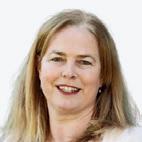



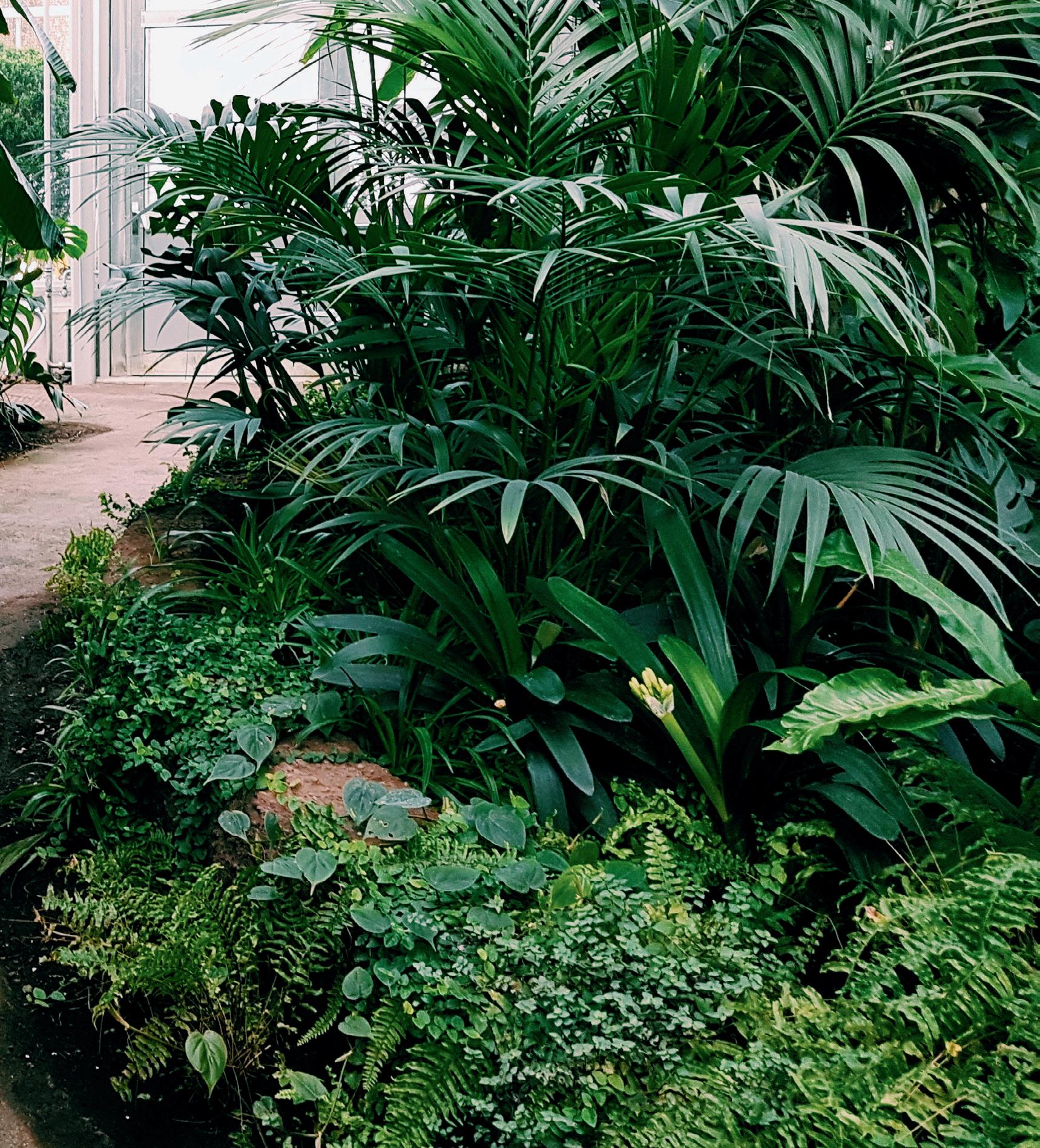
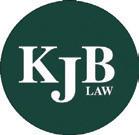

If you ever had a doubt about the importance of elections, just look at the US.
As Australia heads to an election on May 4, it’s time to take stock, assess our own engagement and consider election options seriously.
Donald Trump’s “Liberation Day” tariffs were a slap in the face of so many of America’s allies. Since World War II Australian leaders from both sides of politics have sycophantically followed US policy again and again. And it has been to our detriment.
The Vietnam and Middle East wars are good examples along with the American lead on ridiculous drug policies.
The US has been a good friend to Australia and many other allies for many years. However, under the latest circumstances, it’s time to reconsider our relationship with that country. And it is happening.
Prime Minister Albanese described the tariffs as “having no basis in logic” and that they are “not the act of a friend”.
Not so long ago the US was leading using its power to pressure the world on free markets. Then the American people voted for Donald Trump. On his “Liberation Day” he declared “for decades, our country has been looted, pillaged, raped and plundered by nations near and far, both friend
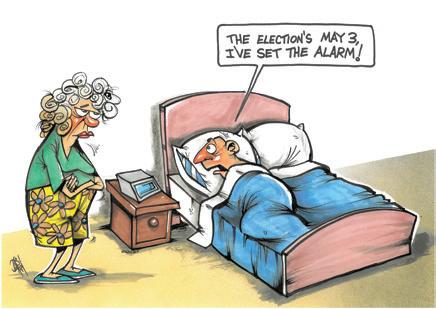
dose of dorin
and foe alike”.
This is the pot calling the kettle black!
Mr Trump was elected in 2024 with 49.8 per cent of the popular vote, ahead of Kamala Harris on 48.3 per cent. However, he did win 312 of the critical Electoral College votes compared to Ms Harris’ 226. However, only 63.9 per cent of eligible voters turned out to cast their vote. By American standards this is a high turnout. There have only been three elections in the last 112 years that have exceeded 63 per cent of voters casting a ballot. Think of the impact, not just in the US but in the world, had a much higher percentage of voters turned out.
In Australia we can expect a voter turnout of more than 90 per cent. With that comes the responsibility
The responsibility of electing an appropriate government falls on each of us. Ensuring we understand the options and ramifications of our vote is part of our civic responsibility.
for all citizens to consider options carefully.
A small minority in Australia bemoan the notion of compulsory voting. In reality, Australia has compulsory attendance – no one can force someone in a secret ballot to cast a vote. It is rare, but some deliberately spoil a ballot paper or submit a blank one.
There are ways for voters to keep themselves informed. The Canberra Alliance for Participatory Democracy (CAPaD) seeks to inform people regarding elections.
Convenor, Dr Peter Tait, explains: “We aim to educate voters, candidates, and parties that elections can be more than just promises and pork-barrelling.”
CAPaD’s recent run of election forums included a total of 140 attendees who participated in person.

Unlike traditional windows and doors, our
and
• Boost energy efficiency
• Enhance insulation
• Reduce outside noise

Others attended electronically. Interesting and insightful video clips are available on the CAPaD Elections Page. It is worth a visit to hear directly from a range of candidates across the political spectrum regarding Canberra and the federal election.
Dr Tait’s reflection on the forums run by CAPaD include, “noting perceptions of policymaking influenced by vested interests… voters are shifting away from the major party duopoly, recognising the value of a strong crossbench in demonstrating alternative ways our political system can function”.
He added: “To rebuild trust, major parties must show how their candidates will engage their electorate communities, and alternative candidates must clarify their approach to representation.”
ACT senator David Pocock has demonstrated just how much impact an independent can have. By listening to his constituency, not being bound by party solidarity or vested interests, and by intelligently reflecting on the most effective policy for the good
of the nation, Senator Pocock has carved out huge support amongst the electorate.
The so-called “teal independents” have done a similar thing in the House of Representatives.
Senator Katy Gallagher, as Minister for Finance, has also had a major impact on government policy and remains attentive to the needs of Canberrans. Additionally, each of the electorates in Canberra is represented by a member of the Labor Party. With very few exceptions, it has been this way since the people of the ACT had a large enough population to have our own electorates. The responsibility of electing an appropriate government falls on each of us. Ensuring we understand the options and ramifications of our vote is part of our civic responsibility.
Michael Moore is a former member of the ACT Legislative Assembly and an in dependent minister for health. He has been a political columnist with “CityNews” since 2006.
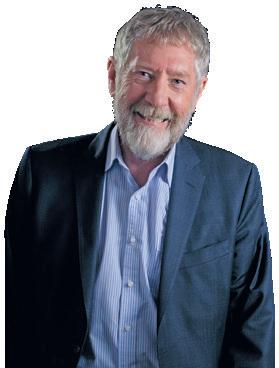

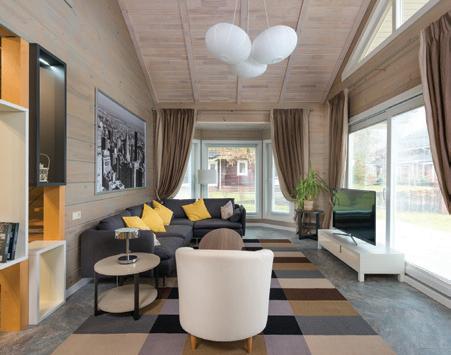

William Shakespeare (1564-1616) is in trouble. Over the years his authorship of some 37 incomparable stage plays has been challenged by Charles Dickens and many others including Henry James, Sigmund Freud, Mark Twain and Walt Whitman (as well as an obscure Canberra author and columnist).
But until now, his reputation as the greatest playwright of all time has barely been dented.
However, the issue has recently attracted a feminist scholar, Robin P Williams in The Sweet Swan of Avon; and right now, the hugely popular author Jodi Picoult has joined the fight with her new book By Any Other Name,”‘the number one international bestseller”.
It incorporates two parallel novellas – one modern, the other in Shakespearean times – plus a very extended author’s note in which Jodi measures the Stratford man’s claim.
Her verdict: “I. Do. Not. Buy. It.”
Her reasons include the usual facts: he was the son of illiterate parents and was not formally educated. There’s no record of his authorship during his lifetime. He never travelled beyond England, though
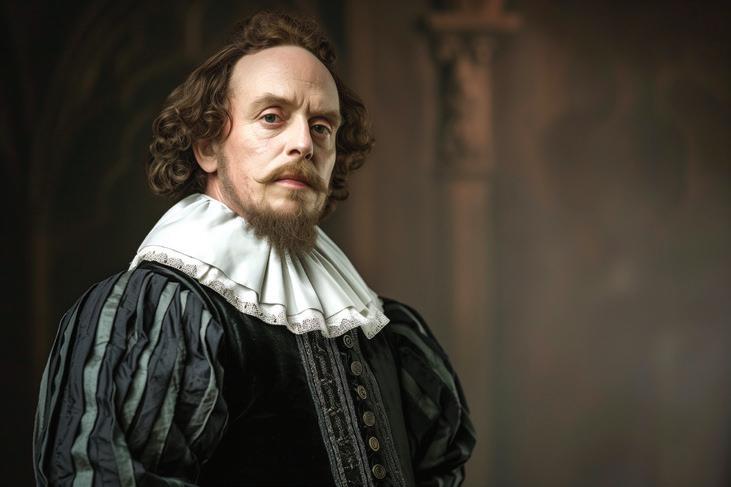
the plays contain details of Italy that only a traveller could know, and a familiarity with the law, the military and the activities of the Royal Court which he also lacked.
Jodi adds one more which I, too, found decisive. She writes: “What really irked me – and stuck like a splinter in my mind – is that Shakespeare created some of the most clever, fierce proto-feminist characters in all of literature – Portia, Beatrice, Ro -
salind, Viola, Lady Macbeth, Juliet, Katherine, Cleopatra – but he never taught his own daughters to read or write. They both signed with a mark.’
Unfortunately, her chosen alternative – Emilia Lanier – is no more convincing than the earlier nominations of Sir Francis Bacon, the Earl of Oxford (Edward de Vere), the Earl of Derby (Ferdinand Strange), Sir Fulke Greville, Christopher Marlowe or Sir Henry Neville.
Perhaps the scene is set for the surrender of a document that will finally resolve the beloved Shakespeare myth.
Indeed, she’s aware of this and is prepared to accept the view of another doubter, Alexander Waugh who holds that Edward de Vere organised a “writer’s room” and Shakespeare was the alias and front man for them all.
My own research flows on similar lines, but my “writer’s room” is aligned with Robin P Williams’ principal subject, Lady Sidney. Her literary and musical “university” was Wilton House, the seat of the Earls of
Both of her sons, the 3rd Earl – who is increasingly accepted as the gilded youth of the Shakespearean Sonnets – and his younger brother sponsored the famous First Folio which Jodi ignores but which, I suspect, caps the greatest literary hoax in history.
Both men in turn were Lords Chamberlain who controlled all the plays performed in England during
the reign of James I and Charles I. In her book, Jodi’s William Shakespeare is not just a failed playwright but a thoroughly unpleasant character – a money-grubber who evaded taxes and gouged his neighbours. She suggests he wrote the first draft of Titus Andronicus but for rest he was merely the broker who cloaked their creators when the Tudor and Stuart tyrannies made playwriting for the nobility a deadly dangerous craft.
While the massive Shakespeare industry will no doubt scoff, By Any Other Name arrives just as the authoritative Oxford Shakespeare has deemed some 18 of the plays to contain more than one creative hand. So this time the authorship question is academically respectable. Perhaps the scene is set for the surrender of a document that will finally resolve the beloved Shakespeare myth.
robert@robert macklin.com
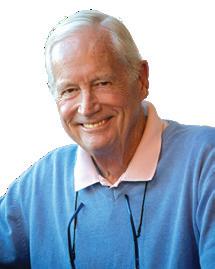
‘We don’t know the answer to that question’ says Dr David Swanton, convenor of Exit International’s ACT Chapter, ‘but we know that this is the only way that many Canberrans feel that they can bring intractable suffering to an end’.
‘Tragically, some people turn to awful solutions such as hanging themselves, which is an appalling way to die and can cause immense trauma to first-responders and family.
Exit International believes that it is the fundamental human right of every adult of sound mind, to be able to plan for the end of their life in a way that is reliable, peaceful and at a time of their choosing. In his decade or so as convenor of Exit ACT, David has met dozens of people, as reported to him by family and friends, who have successfully achieved peaceful and dignified ends.
The ACT’s Voluntary Assisted Dying (VAD) Act 2024 comes into effect in November 2025.
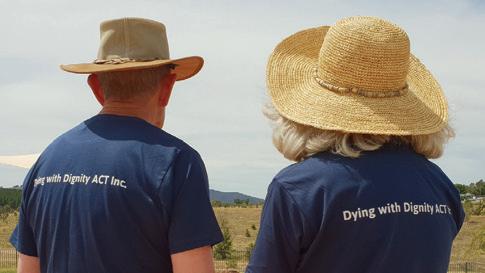
‘This will provide relief to many people who are suffering, but there are many others who will not be helped by the VAD Act as it stands’ he
went on to say.
In David’s experience, many people who have ended their life often felt they had to die alone, without family or friends present to support them in their final hour. That is because of concern that anyone else present at the time might be charged with assisting someone to end their life, which could result in prosecution and punishment.
Dr Swanton will be speaking at 10.30am on Tuesday 15th April at the Voluntary Assisted Dying and the realities of end-of-life in Canberra in the ACT Legislative Assembly Reception Room.
David hopes that the Forum will contribute to the ACT Legislative Assembly amending the Voluntary Assisted Dying Act as soon as possible, to give relief from suffering to many more people than will be possible with the current Act.
For information on the Forum contact Roy Harvey, Project Coordinator, Dying with Dignity ACT projects@dwdact.org.au
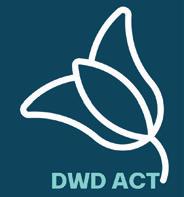

There is a campaign to legalise cannabis by the Legalise Cannabis Party, who are running in the federal election.
Fiona Patten, one-time Canberran, later member of Victoria’s Parliament, is taking the lead.
Whether you are an illicit substance user or hold strong anti-illicit substance views, take a moment to consider what follows.
Permitted or not, many people are going to use illicit substances, either on a recreational or a dependency basis. For these people, the potential consequences are worth the risk.
Cannabis, unlike some illicit substances, does not incite violence. Rather, the use of cannabis makes a person feel mellow, relaxed, and often extremely happy. It can be a totally different story with alcohol use, a legal substance, which often promotes aggression and violence, with at times, catastrophic outcomes.
As a qualified horticulturist, I studied cannabis sativa for one of my botany assignments. The plant is fascinating, particularly being a hermaphrodite (everyone wants a female plant!), and having numerous valuable medicinal qualities.
Cannabis is known to treat illnesses
and disorders including, but not limited to, Alzheimer’s disease, amyotrophic lateral sclerosis, HIV/AIDS, Crohn’s disease, epilepsy and seizures, glaucoma, multiple sclerosis and muscle spasms, post-traumatic stress disorder, chronic pain, serious nausea or vomiting caused by cancer treatment, and inflammation.
And before the anti-cannabis folk screech with rebuke, please do not forget that cannabis is now medically prescribed for people requiring it to treat such conditions as mentioned above.
So why all the fuss when what is portrayed as negative is really a positive?
Janine Haskins, Cook
Scientist Dr Douglas Mackenzie (CN April 3) has taken umbrage at the use of the term “climate catastrophists” by Anthony Hordern (CN March 27).
Judging by the context of Hordern’s remark, he meant any party who responds to emissions-generated climate change with a politically constrained response, inconsistent with engineering sense and possibly having a catastrophic outcome.
Engineers do not attempt the impossible nor do they rely on immature and unproven technology. They shy away from building complex systems when simpler designs would work.
John L Smith, Farrer
Suburban land developers, in particular, appear to have manoeuvred Australians into a hellhole of housing unaffordability.
Developers charge $700,000 (verifiable) for a new, tiny, narrow, no-backyard, block of land, manipulate supply, and dictate absurd development/design conditions. There is no free market there, only heartless profiteering, a misguided sense of property values, and cartel-like behaviour.
Getting developers to put up more flats, with loosened development conditions, will not solve the problems – prices (and profits) will not come down to any significant extent. Government grants, subsidies, shared equity schemes, etcetera are exploited by developers.
It’s time for governments to take back new suburban and satellite-town land planning and development, on a large scale, more sensibly and responsibly, price-wise, socially, and environmentally; to make single-dwelling blocks say, a minimum 600 square metres (achievable without increasing estate footprints); to always maintain supply, especially directly to bona-fide owner-occupiers; and to make the blocks available for say, the publicly ascertainable cost to produce plus a small reasonable margin reflecting the block’s location and characteristics – all saving hundreds of thousands per block.
That will have improved affordability, and

For more information, please contact Cassandra at actoperations@invoc are.com.au
quality flow-on effects across all housing typologies. The federal government and the banks would need to jointly manage any genuinely debilitating market-correction impacts on recent borrowers. Land-value rates could increase, as they can, marginally, to reflect the new affordable land values, and maintain local government revenues.
Jack Kershaw, Kambah
It is so sad to see Mike Quirk (Letters, CN April 3) publicly nailing his Labor/Greens colours to the mast, when he has done such good work against the light rail disaster and in city planning.
To actually support the Greens is particularly galling when one realises that the Greens left their laudable environmental objectives behind long ago in favour of a farLeft agenda, as headed federally by Mr Bandt, whose actions and statements against our long-standing ally, Israel, are quite despicable.
How many more billions of dollars would people like Mr Quirk see a Labor government waste just to win the votes of the gullible who do not know or care about economics, and who do they think is going to pay for it?
But Mr Quirk is preaching to the ACT converted. No one outside the ACT could give a hoot what any Canberran, in his/her Truman’s world, might say politically.
Max Flint, Greenway
I agree with Senator David Pocock’s exasperation with Vice-Chancellor Prof Genevieve Bell (Michael Mooore, CN April 10).
As an ANU alumni, I take exception to her arrogant and Trump-like style, and I am determined not to support ANU fund-raising efforts in the future while she is vice-chancellor. That position was reinforced when she took the woke decision to reinstate Beatrice Tucker who said on ABC Radio that Hamas deserved our “unconditional support”.
As far as I am concerned, the university’s understanding of what is acceptable as “free speech” needs to be reconsidered and Genevieve Bell should resign.
Ric Hingee, Duffy
I quivered at the reporting of finding a kangaroo injured and left to die, detailed in Rebecca Marks’ letter (CN April 3).
Rebecca said she found a badly injured male kangaroo on the side of the road, it had been left to die in agony. When reached, she says, it was calling out for its mother. How exactly does she know that? I’d contend it was probably screaming: “Will someone get the number plate of that useless P-plater who nailed me!”
John Lawrence via email
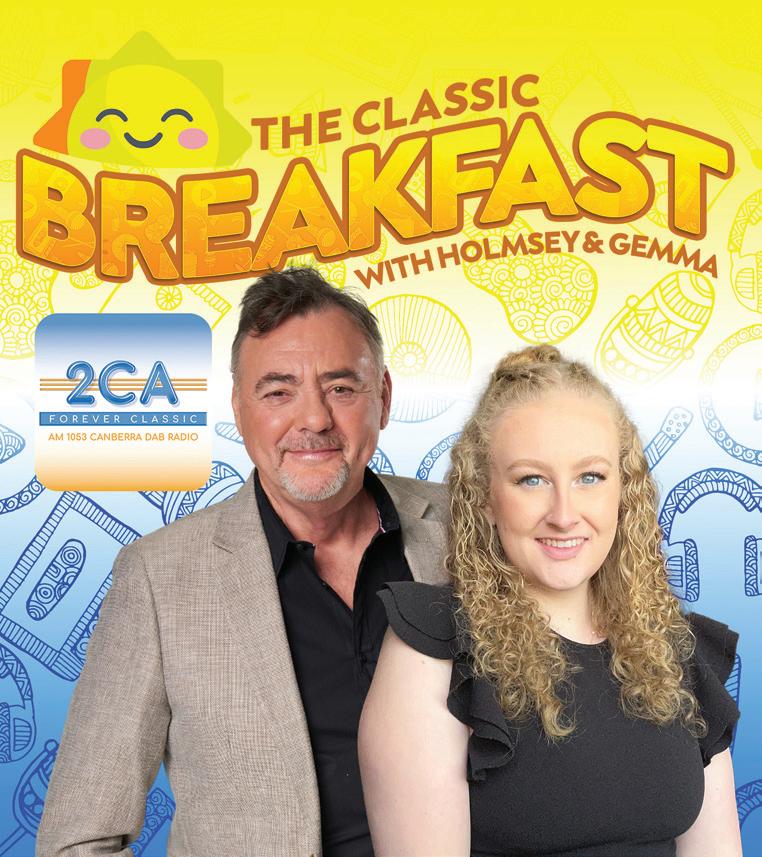

Albanese is no Muhammad Ali but in the current bout the man in the blue trunks, Doge-yDodgy-Dopey-Dutton (aka the Queensland flatfoot) is a wildly swinging lightweight.
Using the Trump playbook Doge-y-Dutton emerged proclaiming he would slash 41,000 Canberra-based public servants to save $7 billion a year; questioned the need for a Federal Department of Education; suggested federal funding could be restricted to schools teaching a “woke agenda”, advocated stopping working from home and foreshadowed cuts to the ABC.
Dodgy-Dutton promoted nuclear power, not just as a solution to long-term energy needs but to the increased cost of living. As its deficiencies were exposed he shifted to a gas reservation policy but was unable to provide the details of how it would work. His energy thought-bubbles are consistent with his past climate change denial.
His housing policies are dopey. The use of superannuation for housing and the lowering of the savings ratio will increase prices by stimulating demand, as they are proposed in a time of extreme supply shortage.
Dutton’s unconvincing tactics have been influenced by right-wing fringe dwellers in the Murdoch media. Most of the damage has been self-inflicted. A loss on points is likely as Albanese lacks a knockout punch.
Mike Quirk, Garran
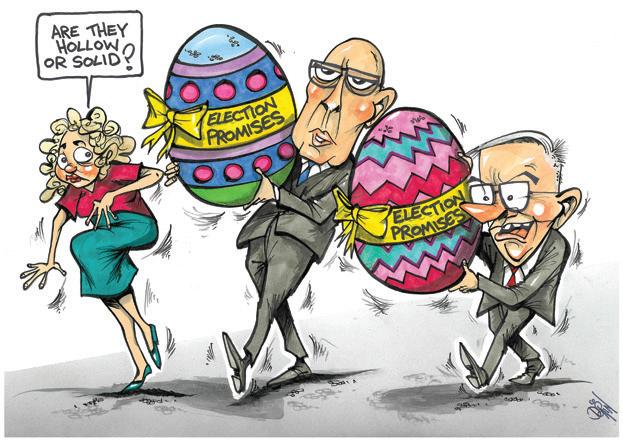
In plain weird or just sloppy Trump fashion, 10 per cent tariffs have been applied to remote, uninhabited, and non-trade islands near Antarctica.
It’s just as well that penguin guano from these Australian external territories can’t be bundled up and dumped outside the White House as a fitting response to this latest inexplicable US idiocy.
Historically guano was used in gunpow -
der production.
No material help whatsoever should be available to an increasingly befuddled yet still vengeful Trump when he rallies his fawning defence and national security appointees to protect him from demonstrating crowds in times of US economic downturn and despair.
Especially since such peaceful protest events might easily surpass the “biggest” and “most beautiful” gatherings that Donald Trump has encouraged and bragged about attracting in the past.
In the meantime, back on the Australian
My condolences to letter writer Rebecca Marks (“Dread of finding kangaroo injured and left to die”, CN April 3).
If you are going to drive on roads within about 50 kilometres of the ACT, I suggest that you get used to the experience.
For many years I carried a single-shot pea rifler in my farm vehicles. The main purpose was to be able to put down distressed native or other animals when I came across them. Someone made it illegal to do this, so I stopped.
For those who have not had the experience of encountering animal injuries and think that motor vehicles are a major problem – wake up to reality. You only see the ones next to the road.
When my daughter was jumped on by a kangaroo as she rode her bike on a public road, she ended up in intensive care and eventually wearing titanium.
The kangaroo was one of the locals well known to us, which is part of the reason she was travelling very slowly, when it jumped on her, from the top of a cutting. Driving along a dirt road quite slowly one evening, I was attacked from the side by two kangaroos. One bounced off the fuel tank of my truck, the other managed to get itself under the rear wheels.
When I went to look for injured animals, the one I found, which was still alive, had both legs shattered and quite possibly internal injuries.
At least 20 kilometres from any settlement and without mobile phone service or any weapon, I ended up doing the duty with a large wrench. It is a very unpleasant thing to do, but it beats waiting for the animal to die from its injuries.
The public concern about firearms and rules about shooting kangaroos at the time, also meant that when I detected an injured kangaroo on my property I was obliged to call Wires.
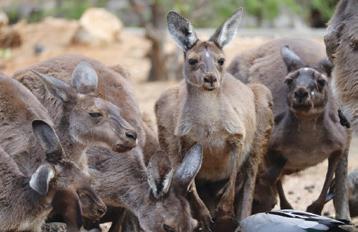
A shooter eventually arrived and proceeded to go through the routine of unlocking his weapon and the bolt for it, then arming it. By that time, the kangaroo with infected wounds to its leg, had moved off into a wooded area, never to be seen again. I guess it just died at some stage from its injuries.
The number of kangaroos in this region is probably not sustainable, which may be why so many of them end up on public roads.
In the mid-1970s I saw no kangaroos on my property. I now have hundreds of them, which might be my own fault for putting in better dams for my livestock.
I would be very pleased if the community, which claims to own these animals, would pay me agistment for their occupation of my property, at a sufficient level to cover the cost of the damage they do to my infrastructure.
I would probably be willing to remove all introduced livestock if there was a decent return. I would even hand feed them during droughts, but won’t be able to prevent them from leaving my property to find public roads they can terrorise.
mainland, Peter Dutton is training hard to win gold cups for both backflips and bellyflops.
The Coalition parties have also made it clear that their dangerous plan to remove 41 000 APS positions is still in place. This unwavering commitment is now underpinned by a more tortuous and muddled approach for ensuring that job losses and departmental gaps will occur year after year, in a haphazard way in every state and territory, not just the ACT.
Sue Dyer, Downer
Sue Dyer (Letters, CN April 10) astutely points out the reckless commitment by the Morrison government to spend $500 million of taxpayers’ money destroying Anzac Hall, which was given an architectural award, and replacing it with a museum for the display of the weapons of war, complete with the identities of sponsors, and, possibly, financial backers.
Ms Dyer also points out the proposed slashing of more than 41,000 Canberrabased public service positions by the Peter Dutton-led Opposition. If this were allowed to happen after the May 3 election, it would have a devastating effect on the economy of the ACT.
The solution? Don’t vote for Peter Dutton and his team of economic amateurs and illiterates.
Dr Douglas Mackenzie, Deakin
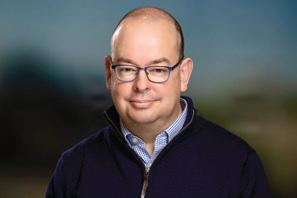
Cain Beckett, pictured, is the new CEO of Carers ACT. He says he brings almost 30 years of experience across government, business and the community sector, with a deep commitment to supporting people with disability and the carers who care for them.
He serves on the boards of Aruma Disability Services, Attain HealthTech and AbilityMade. He is also a former non-executive director of Life Without Barriers, The Summer Foundation, Cerebral Palsy Alliance, and former chair of the NSW Disability Council.
Christine Scott, of OzHarvest, is the guest speaker at the next lunch meeting of the Weston Creek VIEW Club, to be held at the Canberra Southern Cross Club, Woden, from 11.30am on Tuesday, May 6. Ms Scott will detail the work done in the local community in providing “rescued” produce for those in need. Visitors and interested ladies welcome. RSVP to Barbara on 0408 864616 by April 30.

DAVID TURNBULL continues his series of profiles of Canberrans with a story. This week the focus is on a remarkable Dutch migrant who has built bridges between the country he grew up in and the country he now calls home.
Peter Reynders is exactly the type of migrant Australia needs. Born in the Netherlands in 1942, he migrated to Australia in the 1960s in search of a new life.
Married to an Australian, and now a citizen himself, he loves Australia with a passion.
He’s never lost his love for the country he grew up in, but he’ll tell you he’s as much an Aussie now as he is Dutch.
“I’ve spent about half a century here,” he says. “My wife’s Australian, my daughter and sons were born here. This is home.”
When he first arrived, he worked as a waiter in Kings Cross, then as a ceiling fixer on the Sydney Opera House.
He then studied full time to gain a town planning degree from the University of NSW. His thesis focused on sand mining restoration and he soon joined the state government’s first environmental planning team for the Hunter region.
After adding a graduate diploma in local government management to his CV, he spent the next 40 years working for councils in Maitland, Lismore, the Snowy River Shire and Queanbeyan.
The thing that sets Peter, 83, apart is the bridge he’s built between the country he grew up in and the country he now calls home.
“Look, I’ve spent more of my life here, but all my education as a child was in the Netherlands…
the language, the history, the architecture, the land use, everything.”
The Dutch were part of the post-World War II immigration explosion in Australia, but they were never high profile, like the English, the Irish, or the Italians.
At school, Peter learned the first European to set foot on Australian soil was a Dutchman.
But in 2002 an article in a historical society newsletter about the 1606 voyage by a Dutch East India Company mariner named Willem Janszoon and his landing near what is now Weipa on the west coast of Cape York piqued his interest.
The article was written by an Australian-born historian of Dutch heritage named Rupert Gerritsen. So Peter rang him and said that with the 400th anniversary of Janszoon’s voyage due in 2006 they should organise some commemoration.
Rupert agreed.
Peter and Rupert weren’t motivated to honour the Dutch alone. They saw the Janszoon voyage as the first step of a multi-national effort at discovery.
“We formed a not-for-profit organisation called Australia on the Map – 1606-2006 and our aim was to commemorate that first voyage but also educate people about not just the English version of history, but all the mariners who’d ‘discovered’ Australia,” Peter says.
In October 1606, Portuguese mariner Luis Vaez De Torres was the first European to sail through the strait that now bears his name.

Peter Reynders… “I’ve spent more of my life here, but all my education as a child was in the Netherlands… the language, the history, the architecture, the land use, everything.”
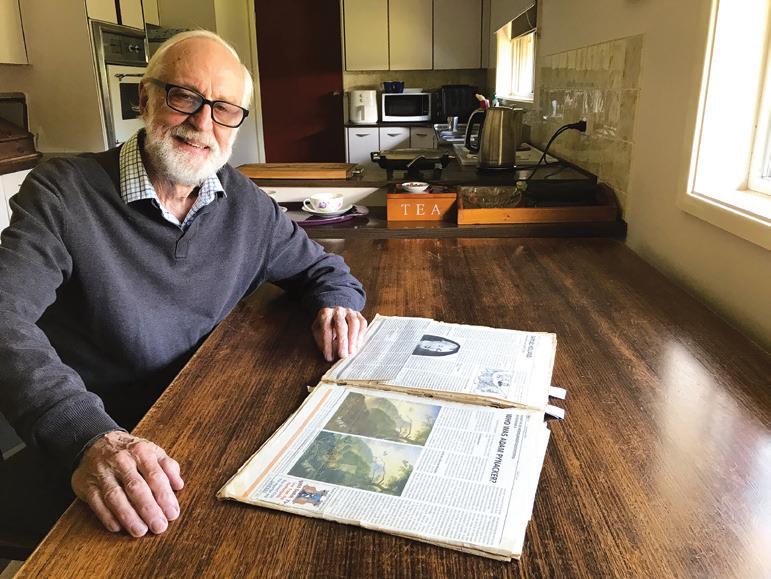
On November 24, 1642, another Dutch East India Company mariner named Abel Tasman sighted the west coast of Tasmania, then charted half the island before bearing northeast to discover NZ (coincidentally named after a locality in The Netherlands)
And, of course, as we’ve all been taught, on April 29, 1770, James Cook landed in Botany Bay.
The French connection came in 1811 when Louis Clarde De Saulces de Freycinet published the first complete map of the Australian coastline.
For four years, Peter Reynders and Rupert Gerretsen met every Thursday at Bookplate – the café at the National Library. They set up statebased working committees to plan celebrations.
When 2006 rolled around the Australian, the Dutch, the French and the Portuguese governments had all supported the commemoration financially.
“Only one government didn’t support us,” Peter says. “The English government.”
Gala dinners were held in Australia and the Netherlands, commemorative ceremonies were conducted, monuments were built in key locations, and a replica of Janszoon’s ship, the Duyfken, that had been built in Fremantle years earlier, sailed to Cairns to mark the occasion.
In Canberra, a Willem Janszoon monument was installed in a park in Griffith that already carried his name.
Not surprisingly, Peter and Rupert Gerritsen were both awarded Dutch honours for fostering so much goodwill between our countries.
original Scheltema paintings.
“The young man was an artist himself, and he understood that Scheltema was a part of Australian art history,” says Peter.
“He said he would give the paintings to me if I could find a gallery in Australia that would give them a home.
“And that’s what I did.”
On his return, Peter noticed the Gippsland Art Gallery in Sale, Victoria, had just purchased a Scheltema painting for $36,000. Were they interested?
Absolutely.
The end result?
An exhibition at the gallery in 2020 entitled The Lost Impressionist.
He was forced to accept one of the paintings for his efforts, albeit under duress.
He would only accept the smallest painting, which now hangs in his study.
It is a rural scene from now suburban, then rural Alphington, in Melbourne, and features an enormous eucalypt with a Hereford steer dwarfed at its trunk.
In a letter over 100 years ago the artist told his family: “…such old eucalypts that had survived the ring-barking, the fires and the clearing are ‘monuments’ from before white settlement.”
Journalist David Turnbull is writing a series of profiles about interesting Canberrans. Do you know someone we’ve never heard of? Share the name in an email to David via editor@citynews.com.au
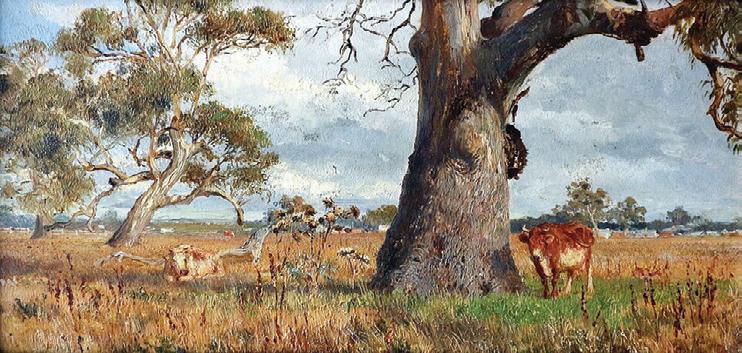
In this feature we focus on some of Canberra’s top schools and colleges that are currently open to enrolling new students.
At Burgmann Anglican School, principal Leonie Harwood says they believe the early years of education lay the foundation for a lifetime of learning.
“As a co-educational school catering to students from our early learning centre through to year 12 across two campuses in Gungahlin, we provide a nurturing environment where children are encouraged to explore, question and develop skills that will shape their future,” says Leonie.
Beyond academics, Leonie says they offer a rich specialist program, including music, physical education and languages, where dedicated teachers bring passion and expertise to the classroom.
“At Burgmann, learning is deeply intertwined with wellbeing, community and the Christian life,” she

“We foster a strong sense of belonging where students feel supported, engaged and encouraged to
“Our teachers work in partnership with families to create an environment where children feel safe,
From kindergarten to year 5, Leonie says students build strong academic foundations through evidence-based literacy and numeracy programs.
As students progress through middle and senior school, Leonie says they build on this foundation by developing independence, leadership and a deeper understanding of their academic and personal
“We invite you to discover how Burgmann Anglican School provides an inspiring, well-rounded education

from the early years through to year 12,” she says. Applications are open for all future years of entry with school tours available on request.
Burgmann Anglican School, 4 The Valley Avenue, Gungahlin. Visit burgmann.act.edu.au or call 6204 3207.
With two new facilities opening at St Mary MacKillop College, principal Michael Lee says the new developments to the school will add a huge range of pathways and opportunities to their students.
“The PE Centre, which opened on the junior campus (years 7-9), includes two new indoor courts and one multi-purpose outdoor court, as well as a strength and conditioning room and several classrooms,” he says.
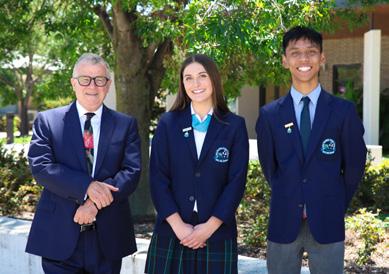
“The performing arts centre, which is based on the senior campus (years 1012) has provided MacKillop with a new 400-seat theatre, modern dance, music and drama rooms, as well as areas for students to construct sets, design costumes and apply stage make-up.”
Michael says the new facilities at the school underpin the delivery of high-quality teaching and learning at MacKillop.
“Our facilities are designed by architects in consultation with the teachers who will use those spaces, leading to quality teaching and learning experiences for all our students,” he says.
“While our students enjoy having modern facilities, the true strength of MacKillop is its teaching staff and the way they seek to get the best out of each and every learner.
“Our teachers are passionate about the school’s vision and firmly believe that each student has a right to learn, be challenged intellectually and be given opportunities that broaden their experiences.”
The school’s open night is on May 5 with a “Try MacKillop Day” on May 9.
St Mary MacKillop College. Junior campus, MacKinnon Street, Wanniassa. Senior campus, Ellerston Avenue, Isabella Plains. Call 6209 0100 or visit mackillop.act.edu.au
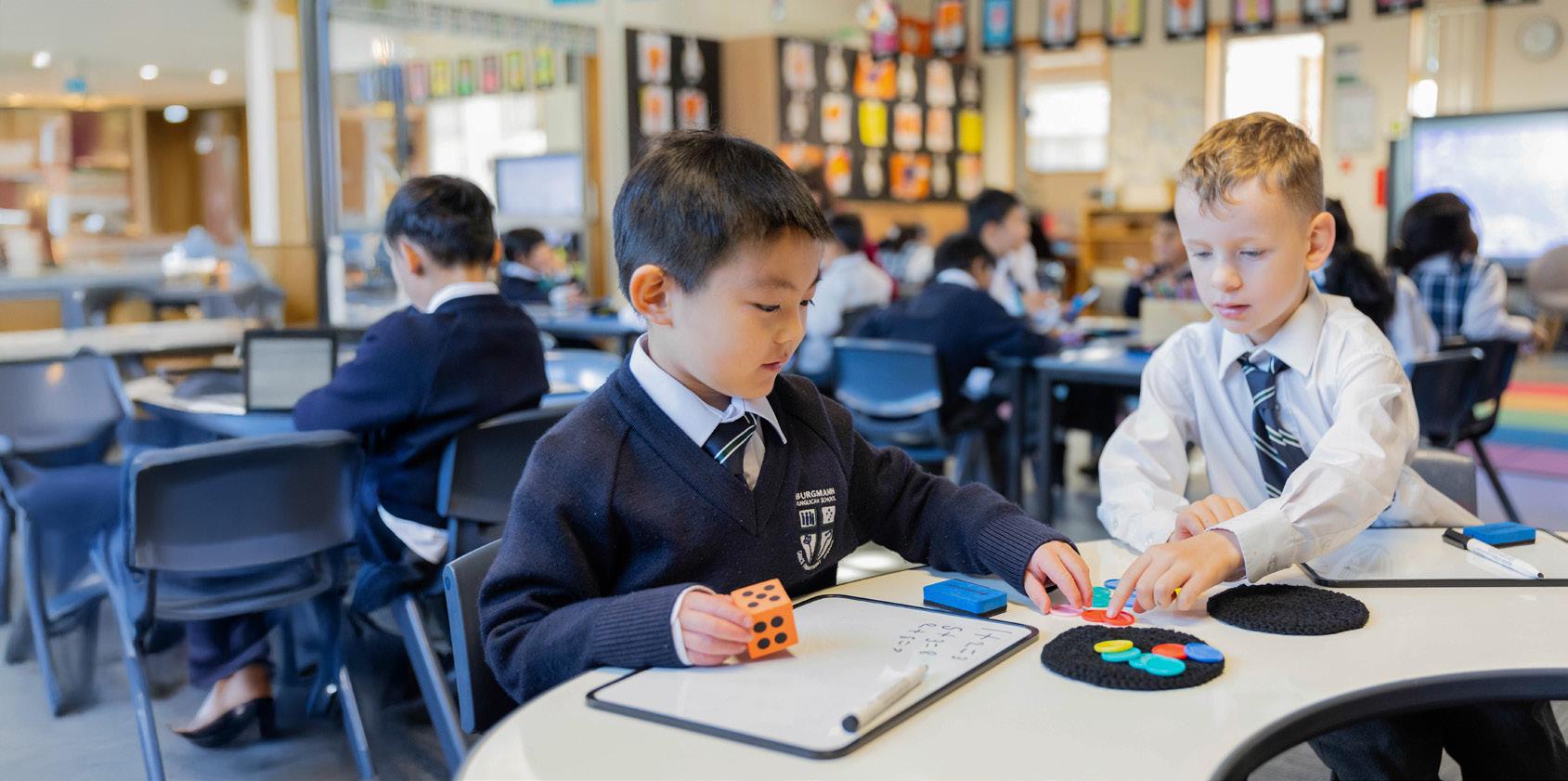
In 2025, St Jude’s in Holder celebrates its 50th anniversary as a Catholic primary school.
“With that comes tradition, wisdom and an openness to purposeful growth in everything we
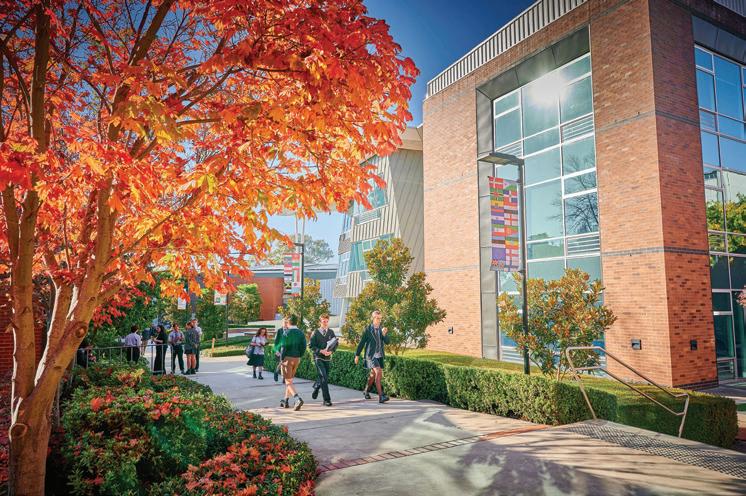
Measured not only by marks and medals, Canberra Grammar School Head Justin Garrick says success is measured by character, confidence and curiosity.
“Whether on the sporting field, in the boarding house, through service, music or academic pursuits, CGS students are ready to thrive in a world of opportunity,” he says.
CGS has more than 2000 students from across the country and overseas, and is one of the largest independent schools in the region.
“My time at CGS taught me the importance of collective success,” says graduating student, Angela.
“Balancing training with academics built my discipline and self-belief.”
From the International Baccalaureate to their thriving alumni community, the head says CGS connects students to a future limited only by their imagination.
“We pride ourselves on educating the whole person,” he says.
Offering students, particularly those from regional and rural communities, access to global pathways, diverse ideas and lifelong networks, Justin Garrick says CGS has had students tell them that boarding plays a powerful role in the region.
“For regional families, choosing CGS is not just a step away from home, it’s a step towards greater possibility,” he says.
“In our supportive boarding community, students find confidence and connection.”
“From primary to the rigours of year 12, CGS students are supported to explore their interests, challenge themselves and grow into global citizens with purpose.
“We don’t just prepare students for exams, we prepare them to be ready for the world.”
Canberra Grammar School. 40 Monaro Crescent, Red Hill. Call 6260 9700 or visit cgs.act.edu.au

presents a high-quality, co-educational experience, which mirrors all that is good in the real world.”
“My son is in year 5 and he loves the small class sizes, buddying with the early learning centre, and
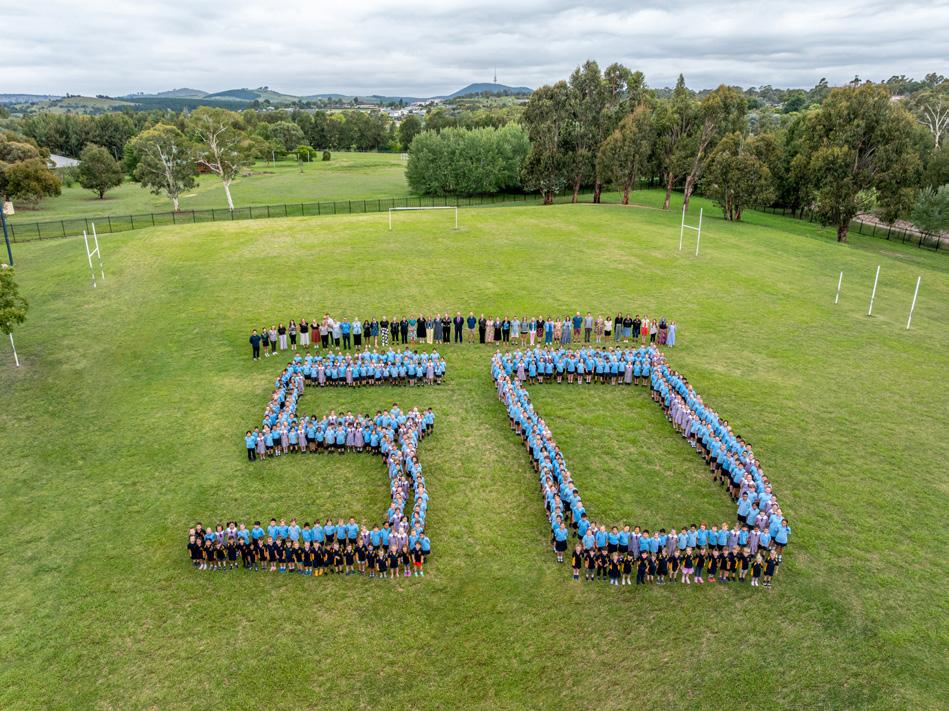

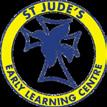
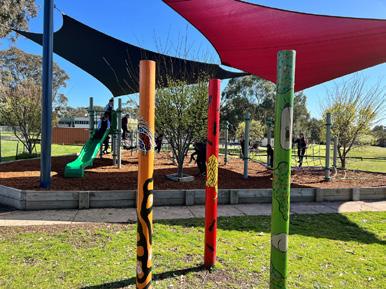

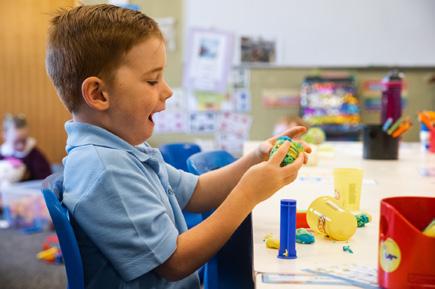
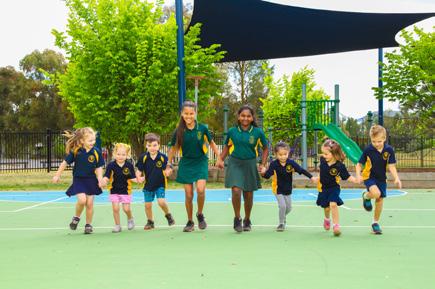

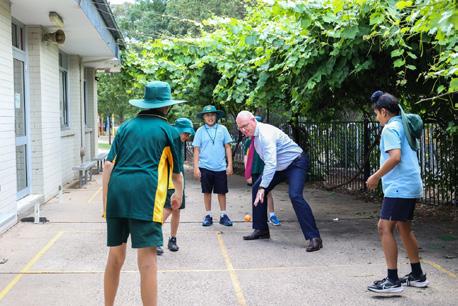
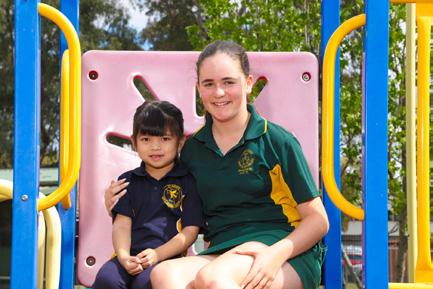

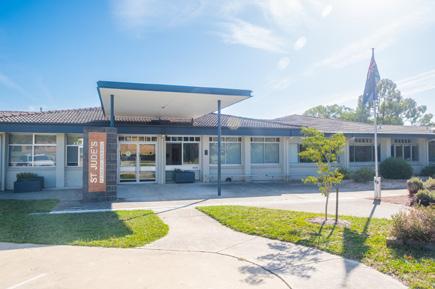
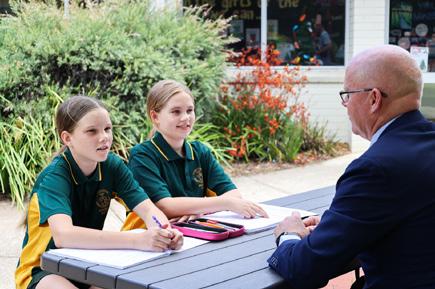
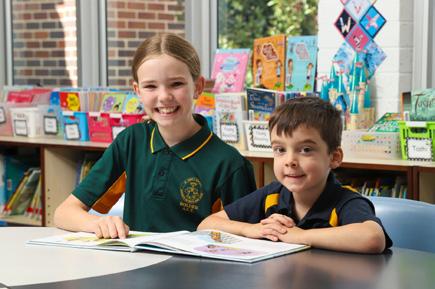
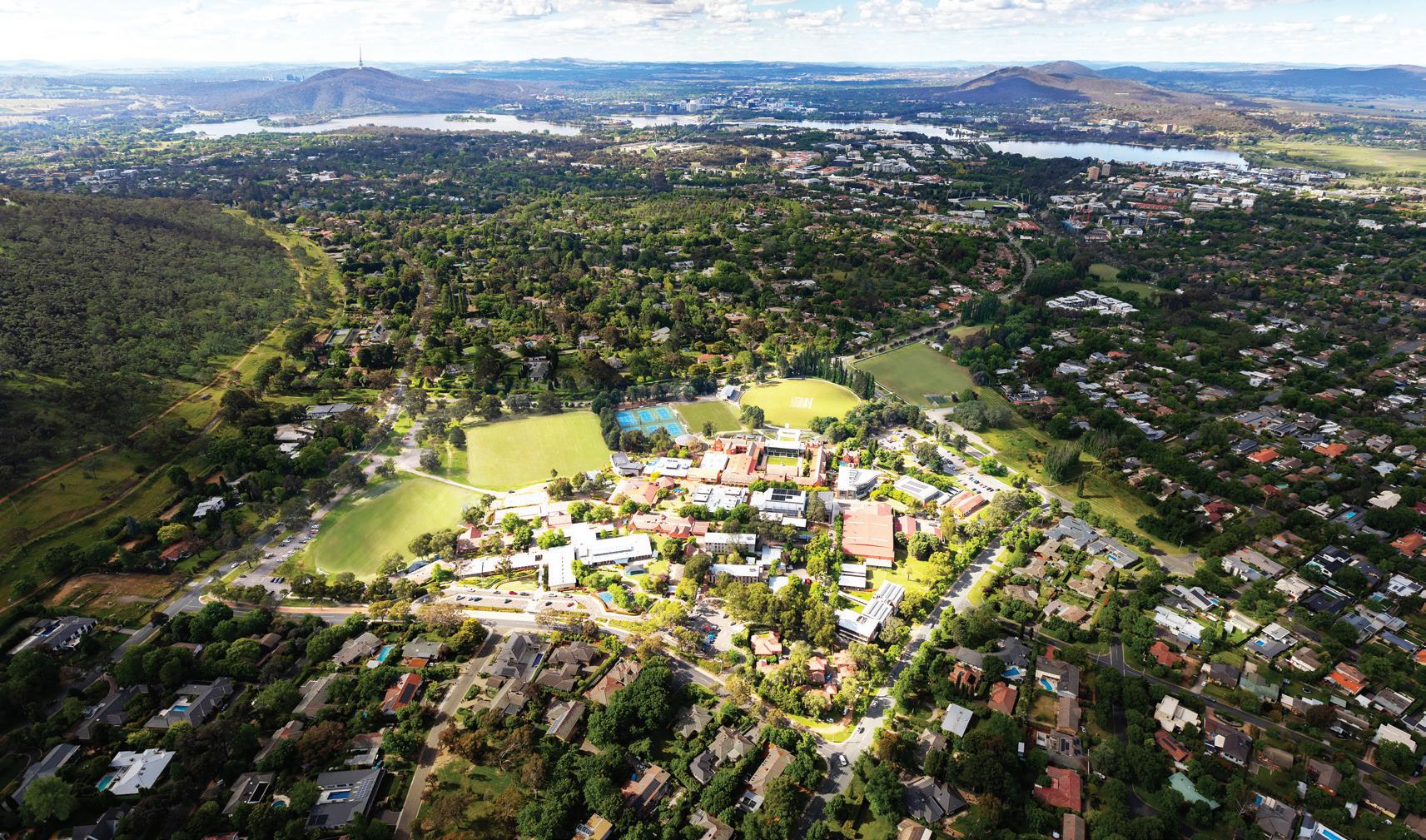

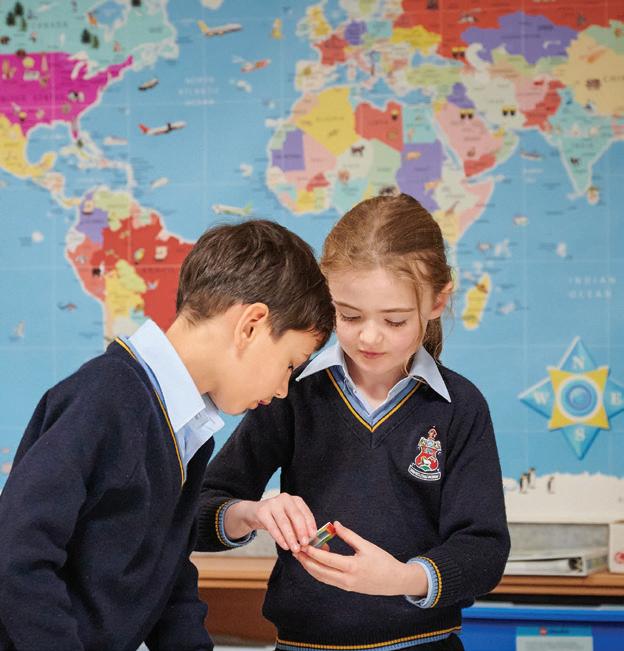

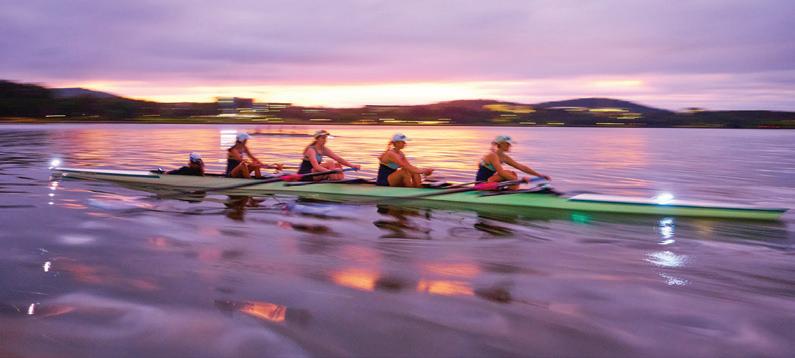
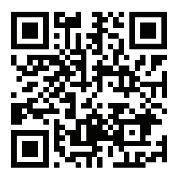
For a century, generations of students from across Australia and the globe have experienced that at CGGS, we are creating a world where young people never stop believing that anything is possible. Established by trail-blazing women, the School continues to champion fearless leadership, visionary thinking, unwavering resilience and engaging learning for life.
Located just one kilometre from Parliament House, CGGS provides a world-class educational and co-curricular offering in the heart of the nation’s capital. Perfectly positioned at mid-sized with 1300+ students, the School is co-educational from Early Learning to Year 3, then female-focused through to Year 12.
A three programme IB School
CGGS was the first school in Canberra to offer the International Baccalaureate (IB) Primary Years Programme (PYP), Middle Years Programme (MYP) and Diploma Programme (DP). The IB is a robust academic curriculum, designed to build solid and continuous learning from early
childhood through to Year 12.
Commitment to holistic learning
At CGGS we place strong emphasis on a balanced, broad-based education in a culture that celebrates authenticity and originality. The School’s bespoke Signature Programs inspire respect, empathy and kindness, offering a comprehensive framework that nurtures academic, emotional and social growth from the ELC to Year 12—students are set on a path to become confident and capable young adults.
Empowering the next generation of women in STEM
Girls’ schools have an important role to play in fostering a love of learning in Science, Technology, Engineering and Mathematics—our graduates leave school prepared, inspired and confident to

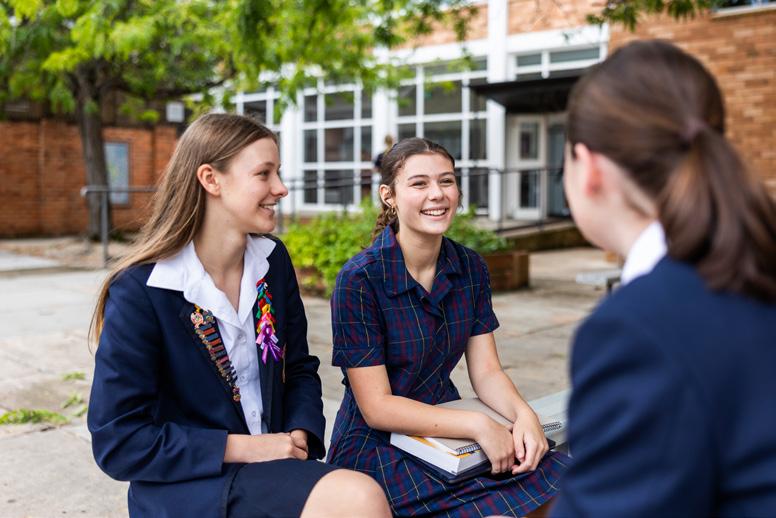
Established in 1959, Merici is a Catholic college for young women in years seven to 12.
“We are an authorised International Baccalaureate (IB) World Schools for the Middle Years Programme (MYP) and the Diploma Programme,” says principal Anna Masters.
“IB World Schools share a common philosophy – a commitment to high-quality, challenging and international education – which we believe is important for our students.”
With the MYP mapped to the Australian Curriculum, Anna says the college also offers BSSS certifications.
“We provide an engaging educational environment, designed to challenge our students to take risks within and beyond the classroom to achieve individual academic excellence,” she says.
Anna says the college is a welcoming community, where authentic relationships are nurtured, and where
dignity and integrity are affirmed.
“We seek to foster within our students a lifelong love of learning, where each young woman is given the opportunity to grow spiritually, physically, emotionally and intellectually in order to make a positive contribution to society,” she says.
According to Anna, their excellent outcomes for students are a culmination of striving to live out their mission.
“Merici empowers women to love life, have hope, be faithful and build futures more wondrous than they dare to dream,” she says.
Ranked the highest Catholic school in the ACT for Year 12 2024 academic results, Anna encourages families to visit the school during its open day on May 7.
Merici College. Wise Street, Braddon. Call 6243 4100 or visit merici.college



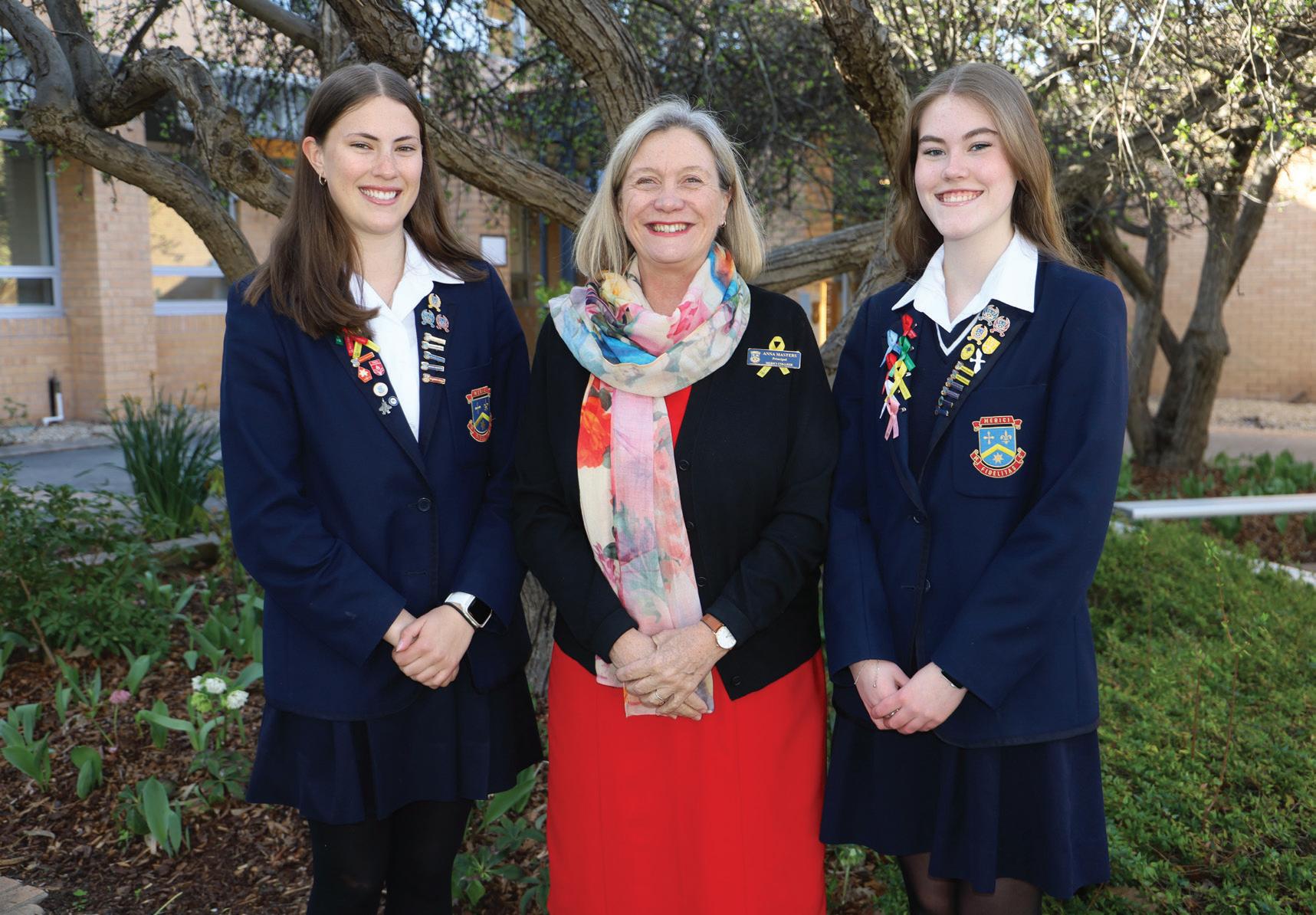
You’re welcome to join us while we showcase Merici
Wednesday 7 May 4:00–7:30pm
Wednesday 7 May 4:00–6:00pm
Wednesday 7 May 6:00–7:30pm
Tuesday 13 May 5:30–7:30pm
Wednesday 7 May From 6:00pm



St John Vianney’s in Waramanga is a small, inclusive school that nurtures the heart, mind and spirit of its community, says principal Peter Rodda.
“With a focus on acceptance, excellence and service, the school fosters a welcoming environment where every child is valued,” he says.
On spacious, well-maintained grounds, Peter says the school offers diverse and engaging play spaces for all students.
“Following the example of our patron saint, we strive to do ordinary things extraordinarily well,” he says.
“Children of all needs and faith backgrounds are welcomed and we make every effort to support each student and their family in our school community.”
Staffed by highly trained, dedicated educators committed to delivering the best of Catholic education, Peter says their teaching approaches are evidence based with a strong emphasis on explicit
and direct instruction.
Featuring interactive LED boards in every classroom and providing all year levels with access to iPads or laptops, Peter says the school is well resourced.
“Students also benefit from specialist classes in performing arts, Italian, library and science,” he says.
“Every student receives a child-focused education and every community member is treated like family.
“We don’t just enrol a child, we enrol an entire family.”
Peter encourages school tours for families to see what St John Vianney’s can offer.
Tours are available every Wednesday in May between 10.30am and 5pm or Saturday, May 3, 9.30am-12.30pm.
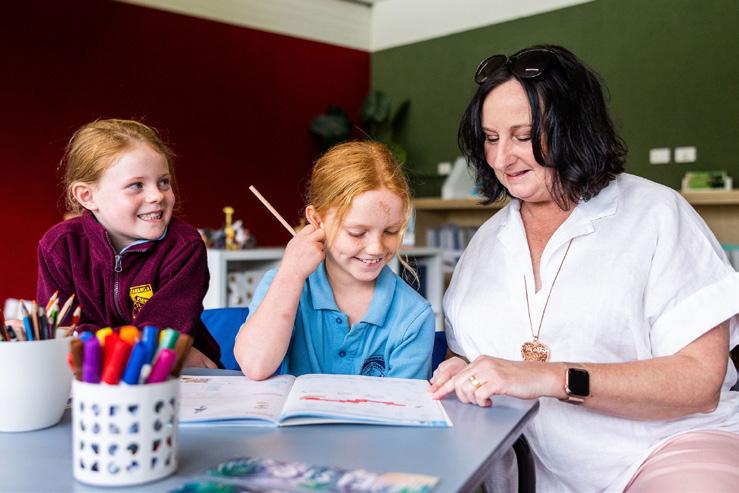

The Dante Alighieri Society (DAS) of Canberra is passionate about the promotion of Italian Language and Culture in Canberra and is pleased to support two initiatives expanding Canberra’s opportunities to engage with Italian culture.
“We welcome the Viva Italia in Canberra Festival and warmly congratulate the organisers,” says president Franco Papandrea.
“We are also very pleased to join the students at Yarralumla bilingual Primary School to celebrate Dantedì (Dante Day) on March 25, as a tribute to the father of the Italian language.”
Established in 1957, the Dante Alighieri Society has been offering an authentic experience of Italian language and culture to the Canberra community for more than 65 years and is widely regarded as the best place to learn Italian in the national capital. available in Canberra at competitive prices, the
society is the only place within the region where non-native Italian speakers can sit exams for the PLIDA certificate of Italian competency.
Thanks to assistance by the Italian Ministry of Foreign Affairs and International Cooperation, the society employs mother-tongue Italian-language assistants to support Italian classes in Canberra’s schools.
The society also provides subsidised Italian language courses for children attending schools where the language is not offered.
Membership of the society is open to anyone and members are provided with an extensive program of cultural and social activities including weekly social conversation groups, special events and social occasions.
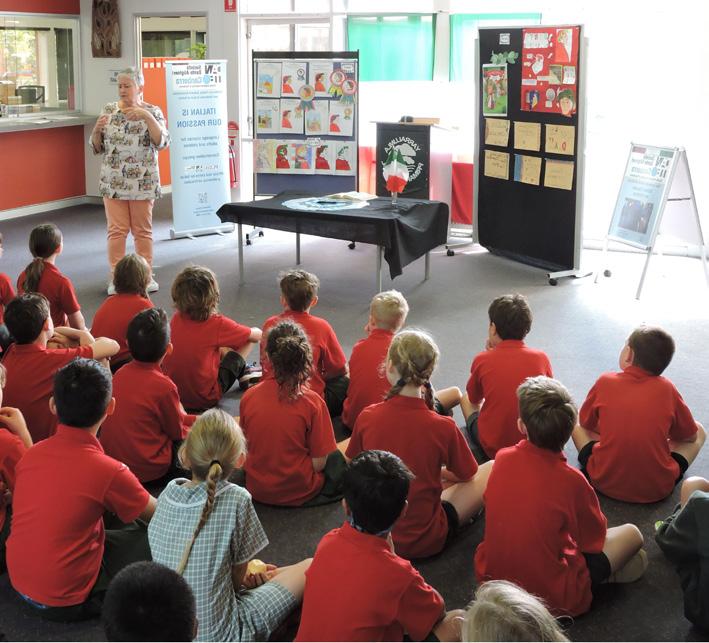
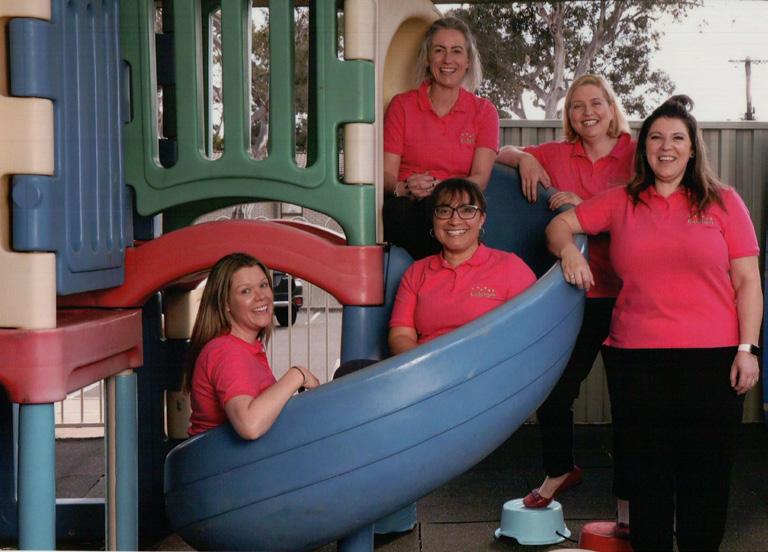
“We are not a childcare centre, but provide classes with opportunities for each child to develop socially, physically, emotionally and intellectually through sequential programs full of fun, structured and stimulating activities
“We bring families together to create relationships and connections within the Canberra community.”
Kidstart is accepting term two enrolments with classes available for children aged five months to five years, Kristen says Kidstart has a program to suit all children before they start school.
“If you want to assist your child to develop a lifelong


According to Kristen, it’s a privilege to see the children thrive each day, from rolling over on the floor to learning phonics in their literacy program.
“We’re fortunate to have long-serving staff members dedicated to providing the optimum learning environment for all our children at Kidstart.
“There’s a special bond with teaching children, from when they are babies and seeing them grow and develop before heading off to school.
Kidstart, 65 Sternberg Crescent, Wanniassa. Call 0422 406622 or visit kidstart.com.au
Classes for children 5 months to 5 years
Independent pre-preschool program for 3 and 4 year olds
Preschool PLUS for 4 and over
Emphasis on development of motor skills, academic and social skills
Preparing children for formal schooling
introducing structure and routines in a play
fun and creative atmosphere
On the 110th anniversary of the landing of Gallipoli, the Australian War Memorial will pay special homage to the 100th anniversary of the Royal Australian Corps of Signals (RA Sigs) on April 25.
“Former Australian Army signallers will gather at the Australian War Memorial to mark the 100th anniversary this Anzac Day,” says Australian War Memorial director, Matt Anderson.
Commemorating the Australians who served in times of peace and war, Matt says RA Sigs will lead the march for the Anzac Day RSL ACT Veterans’ March.

“Individual participants were also invited to take part in this national commemoration,” he says.
“We are encouraging all to march with us this Anzac Day.
“Current and former Australian Defence Force, Commonwealth or Allied force veterans, along with their relatives, were eligible to march, even if they aren’t part of a formal group or association.”
The RA Sigs were officially formed in 1925 as a group of technical specialists who provided electronic warfare, communications and cyber capabilities support for the Australian Defence Force (ADF)’s operations around the world.
Since World War I, more than 100,000 signallers have served in the Corps.
To this day, there are an average of 300 personnel joining the Corps every year, with more than 300,000 family members and descendants of those who have served in the RA Sig.
RSL ACT CEO Kimberley Hicks says the march
provides a great opportunity for individuals and families to pay tribute to those who have served before them.
“Marching on Anzac Day is a tribute to those who served and sacrificed,” she says.
“We want families and individuals to be part of this national ceremony in Canberra.”
There are thousands of currently serving Defence members in the capital city who continue to make sacrifices to the nation and Kimberley encourages them to take part in the commemoration as well.
Commencing at 5.30am, the Dawn Service will return to the parade ground for the first time since 2021 with an address from the Deputy Chief of Navy Rear Admiral Matt Buckley.
A standing ceremony, tickets are only required for accessible seating, and a live broadcast will be available on ABC TV and iView.
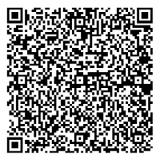
Following the service, the Commemorative Area will open between 6.30am and 7.30am.
From 7.30am, the Aboriginal and Torres Strait Islander Veterans and Services Association Commemorative Ceremony will begin at the For Our Country sculptural pavilion on the lawn near Limestone Avenue.
Hosted by members of the Aboriginal and Torres Straight Islander Veterans and Services Association, all members of the public are invited to attend.
The National Commemorative Service and RSL ACT Branch Veterans’ March will commence at 9.30am on the Parade Ground of the Australian War Memorial, with an Anzac Day address delivered by Major Angela Uphill, a physiotherapist from the 2nd Health Brigade.
Director Anderson says Major Uphill’s speech will be a defining moment of the day.
“Her story is one of courage and resilience and I have no doubt she will leave the crowd spellbound,” he says.
The Last Post ceremony marks the conclusion of the day’s events and will start at 4.30pm, commemorating the service and sacrifice of Edward Frederick Robert Bage, a captain of the 3rd Field Company of the Australian Engineers.
Capt Bage served during World War I and was killed in action at age 27.
Roads surrounding the Australian War Memorial will be closed from 6pm Thursday, April 24 to 6pm Friday, April 25, and limited parking will be available onsite for visitors with accessibility needs.
Limestone, Fairbairn and Constitution Avenue and the Blamey Crescent and Currong Street intersection, will be affected.

This Anzac Day, the Canberra Labor Club Group invites the community to come together in remembrance and shared camaraderie as they pay tribute to the courage, sacrifice and enduring spirit of both past and present servicemen and women.
At Canberra Labor Club Belconnen, enjoy a traditional game of two-up between noon and 5pm.
The clubs will offer special food deals valued from $18.
Australian War Memorial Dawn Service attendees are encouraged
to stop by the Central Social Club to enjoy the bacon and egg roll with a coffee deal ($12), which will be available from 10am for both dine in and takeaway.
Canberra Labor Club Belconnen, Belconnen, 6251 5522. Central Social Club, City Walk, 6230 0404.
Weston Creek Labor Club, Stirling, 6288 5047. Ginninderra Labor Club, Charnwood, 6258 8618. More information and bookings at laborclub.com.au

25 A P R I L 202 5
FREE DAWN SERVICE BUS
DEPARTING AT 4 . 30AM
Returning to The Dickson Tradies after the dawn service.*
*Members only, bookings required.
FROM 5. 30AM
Join us in The Lounge for a live stream of the Dawn Service. purchase.
ALL RETURNED OR CURRENT SERVICE
PEOPLE CAN JOIN THE CLUB FOR $2 AND ENJOY THE COMPLIMENTARY BREAKFAST.
MEMBER $25 | NON-MEMBER $28
Free for active and returned service-people.*
Call reception on 02 6162 5656 to book now.
THE DIGGERS’ BIG BREAKFAST
Bacon, chipolata sausage, hash brown, scrambled eggs, mushrooms, spinach, country style beans, tomato, sourdough toast
VEG DIGGER
Scrambled eggs, hash brown, mushrooms, spinach, country style beans, smashed avo, beetroot relish, sourdough toast
Please note no variation to the menu items will be allowed on the day.
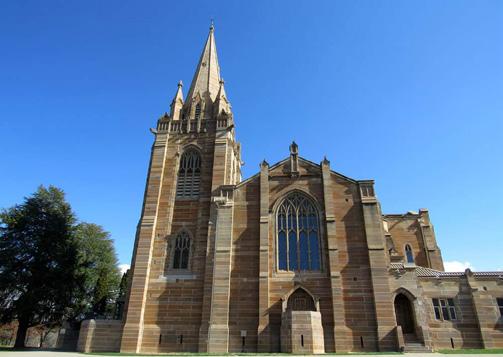
“At the Church of St Andrew, during Holy Week and Easter, we remember that Christ died for us, and reflect on the pain of the crucifixion and the hope that lies beyond Christ’s death through the resurrection,” says session clerk Suzanne Hogan.
“The message emphasises the significance of Jesus’ sacrifice and the new life He offers, encouraging believers to find hope, purpose, forgiveness and healing in His resurrection.”
In their Easter services, Suzanne says St Andrew’s uses the Gospel of Luke, “a careful, historical account where we receive the facts of our Saviour’s arrest, execution and most importantly resurrection.”
“Our vision at St Andrew’s is sharing Jesus Christ by worship, teaching, friendship and care.
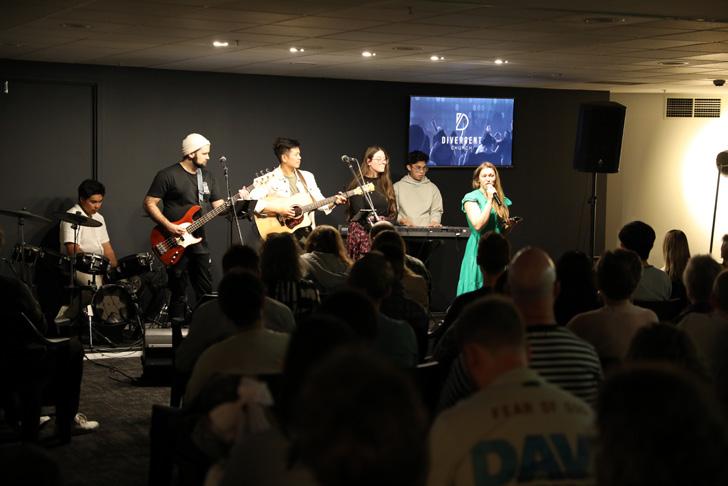
the symbol of the cross.
“It’s not just history,” says Kade.
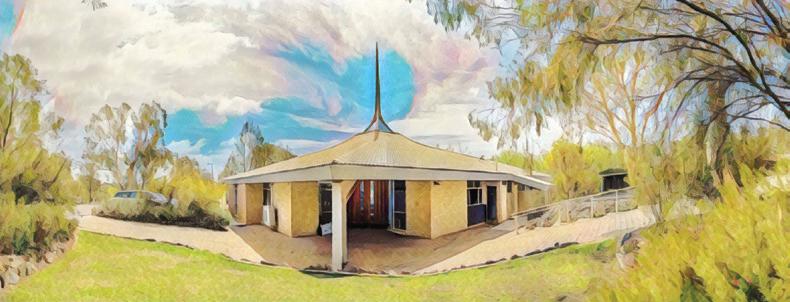
A “place for everyone”, the Holy Covenant Anglican Church will be honouring the Easter weekend with its Holy Week celebrations from Sunday, April 13 to Easter Sunday.
“In keeping with our vision, we welcome the opportunity to share the Easter message with the broader community and warmly invite you to join us at one of our services.”
With services held across Canberra from Thursday, April 17, to Sunday, April 20, Suzanne recommends visitors bring friends and family to reflect and celebrate together with their church communities.
The Church of St Andrew, in State Circle, Forrest; the St Andrew’s Scullin Church (corner of Ross Smith Crescent and Gatty Street) and the Weston Creek Presbyterian Church (Mahony Court near the Cooleman Court Shopping Centre) will be participating in the Easter celebrations and reflections.
Presbyterian Church of Saint Andrew. 1 State Circuit, Forrest. Call 6295 3457 or visit standrewscanberra.com
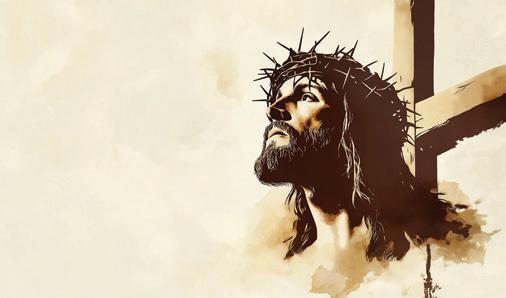
“For God so loved the world that he gave his one and only Son, that whoever believes in him shall not perish but have eternal life.” John 3 :16
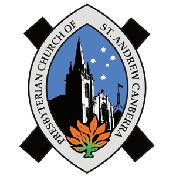
“We believe the Bible and the testimonials are still important to this day.”
More than 2000 years old, the weight of Jesus’ sacrifice on Easter and His resurrection is an important story that highlights the significance of connection and relationships with God, says Kade.
Open to the general public, the Divergent Church will host two services on Good Friday and Easter Sunday.
“The Easter weekend is a great time to learn about Jesus and God, and understand how He has become a significant part of our life and culture,” says Kade.
“The symbolism of the cross represents forgiveness and peace, and how Jesus lay down His life to allow us to live.”
Kade says Divergent Church believes Church isn’t just an event you attend, but a community of people living out the life of Christ.
“We live for His cause and act as catalysts to bless a world that does not know Jesus.”
“Jesus reconnected us with God and the Easter weekend is an important time to reflect on all that He has done for us.”
Divergent Church. 148/2 Akuna Street, Canberra. Call 0468 383 575 or visit divergentchurch.com
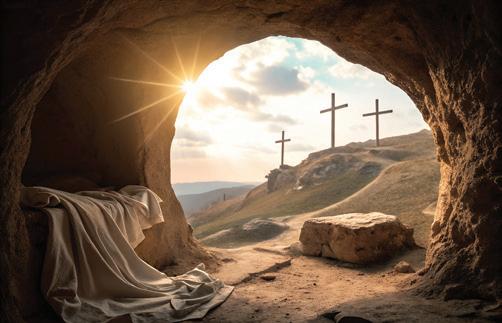
GOOD FRIDAY
April 18, 9.30am ‘The Upper Room’
A quiet reflective service, taking the time to consider the crucifixion of Jesus
RESURRECTION SUNDAY
April 20, 10.30am ‘The Upper Room’
A service of thankfulness & worship, celebrating the victory of Jesus over death


Valuing all that Jesus did, the church says it prioritises inclusion, diversity, compassion, justice and freedom.
“We are a community of friends who can help you to become all that God made you to be,” the church says.
“We seek to help people become all they were created to be. When we can be our true selves, we are then able to help the world become a better place for everybody.”
Open to all, the Holy Covenant Church’s Holy Week started with Palm Sunday before moving to Maundy Thursday, Good Friday services, Holy Saturday services and Easter Sunday.
Stations of the Cross and a Vigil at 4pm and 5pm respectively on Saturday are a new addition to its Easter weekend program this year.
“Holy Covenant is different because we focus on God’s abundance and strive to make the world better rather than simply waiting around for heaven to arrive. “Where some promote isolation and perfectionism, we encourage engagement and embracing diversity.”
As the celebrations for Holy Week begin, the church says it is a “journey we travel with the whole company of the church in all its richness and diversity.”
Holy Covenant Anglican Church. 89 Dexter Street, Cook. Visit holycovenant.org.au or call 6251 6100.
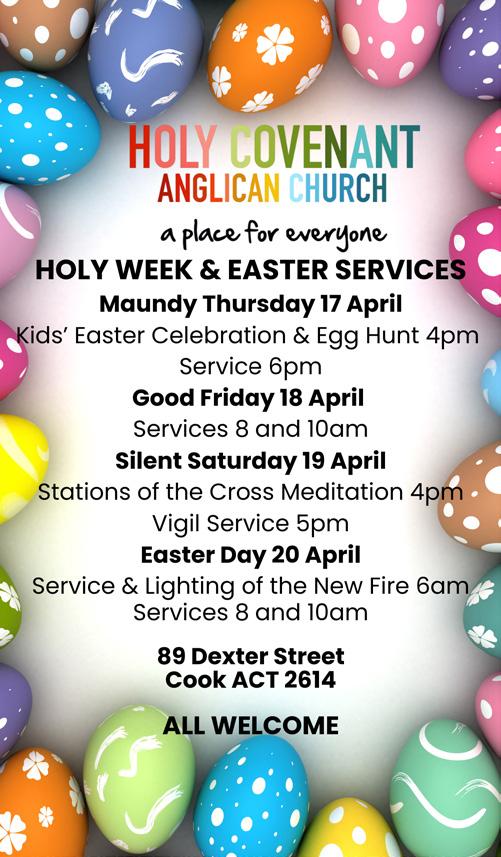
By Helen MUSA
Sweet Charity, coming soon to The Q, is one of those tricky things, a “thoughtful” musical.
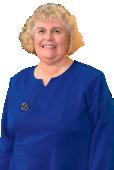
Inspired by Federico Fellini’s black-and-white film, Nights of Cabiria, it revolves around the optimistically naïve Charity Hope Valentine, a dancer-for-hire at a Times Square dance hall.
After a series of disastrous personal encounters, in most productions, a sign goes up at the end saying: “And so she lived… hopefully… ever after”.
All that is grist to the mill for director Joel Horwood, who tells me: “I’m just drawn to good stories.
“It’s a musical with a really interesting story; Neil Simon wrote the dialogue which is very witty and you don’t always say that in musicals. In many musicals, the dialogue goes off at the expense of the big numbers. Sweet Charity is character-driven and it felt like a good fit.”
And it comes with showstopping numbers such as Big Spender, The Rhythm of Life and I’m A Brass Band.
“Musicals are often fluffy and paint the world through rose-coloured glasses. There’s not a happy ending in this one and the ending is not tied up,” he says.
“Neil Simon didn’t write the book for many musicals, Promises, Promises being an exception, but when he wrote musicals the book shines through,” he says.
Horwood is staging it on a small scale with only 20 actors and a bit of doubling, believing it’s a good opportunity for audiences to see a really good story.
“I’ve been in a few musicals,” he says. “But mostly ones that don’t involve much dance, that’s not my strength.”
Not to worry, Amy Orman, who plays Charity, is besotted with dance. She works by day at Bom Funk Dance Studios in Queanbeyan and as creative director for Kix Arts Productions.
Born in Canberra, she studied dance at McDon ald College in Sydney, took out a musical theatre degree at The Chicago College of Performing Arts and spent time in NYC.
While working shows for Princess Cruises, she
30 April — 4 May 2025

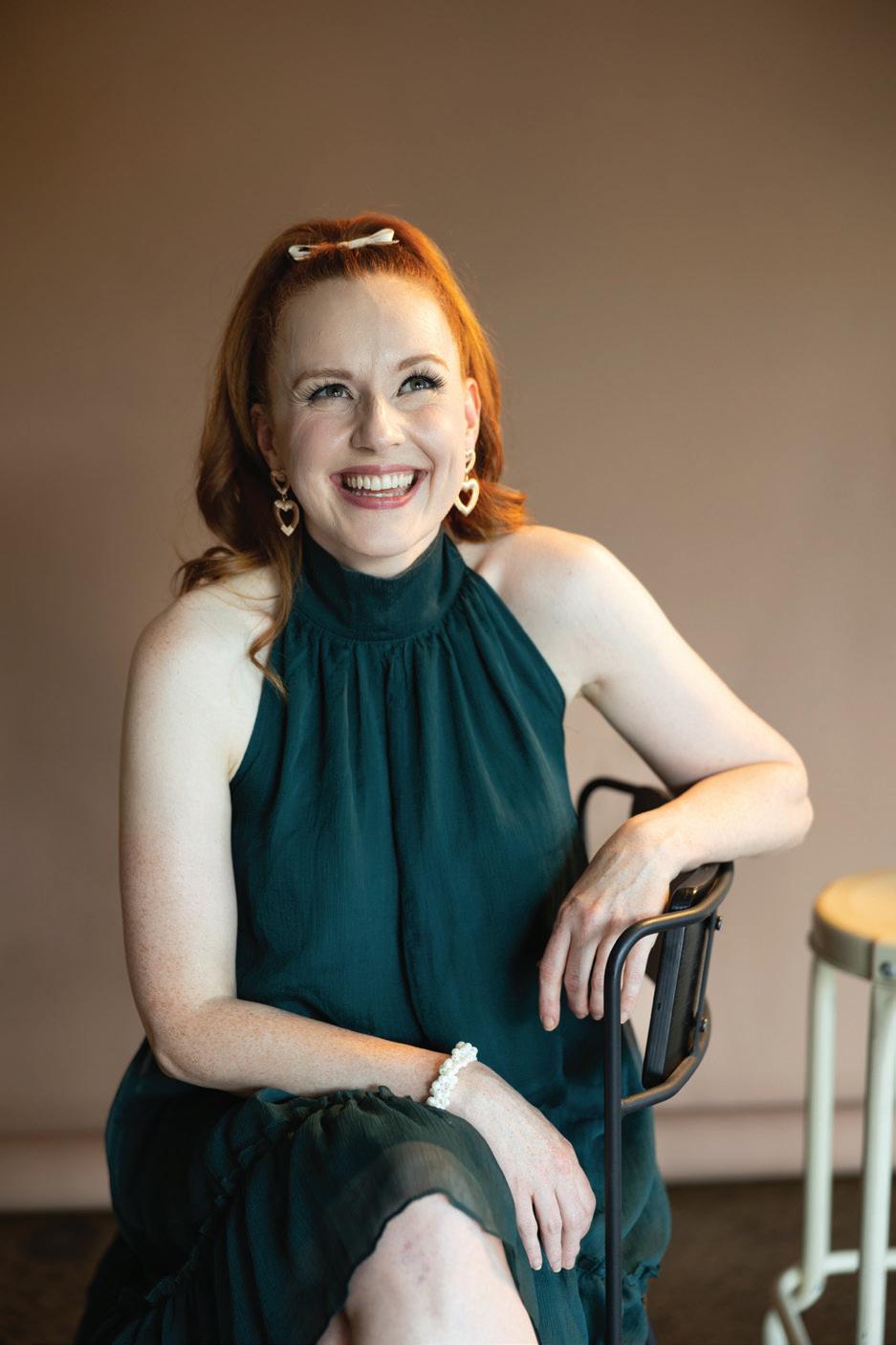

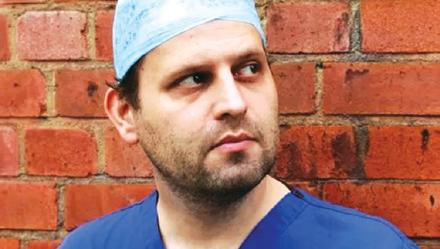
Adam Kay… his stage show, This is Going to Hurt: Secret Diaries of a Junior Doctor, Canberra Theatre, April 25.
By Helen Musa
Doctor-turned comedian Adam Kay’s debut novel was named British Book of the Year in 2017 and has since been adapted into a multi-BAFTA-winning comedy-drama series for the BBC and a stage show, This is Going to Hurt: Secret Diaries of a Junior Doctor, to be seen at the Canberra Theatre, April 25.
QL2 Dance is moving from its usual venue, The Playhouse, for its major show, Garden, to be staged May 2-4 at The Fitters’ Workshop in Kingston, where matinee performances will be presented in daylight. The double bill of new contemporary dance is created by James Batchelor, newish QL2 director Alice Lee Holland and a cast of 27. The company describes the work as “a living, breathing exploration of lineage, rebellion and resilience.”
Phoenix Collective Quartet joins forces with pianist Zen Zeng to present a program exploring inner worlds mapped and shared through sound. The centrepiece of the program is Schumann’s piano quintet. Wesley Music Centre, April 27.
The Lodge is a moving-image artwork by a Wiradyuri conceptual artist Amala Groom. Filmed in the Parliamentary Triangle, it links Groom’s activism at the Aboriginal Tent Embassy with rites of passage both in and out of Parliament House. Wearing a wedding dress, Groom symbolically weaves and unravels a red rope along Anzac Parade. Canberra Contemporary, Parkes, May 3-July 12.
Joe Woodward’s production of Romeo and Juliet for Daramalan Theatre Company takes a look at emerging sexuality and warring families in a way that challenges attitudes towards youth and society. Joe Woodward Theatre, Daramalan College, April 26-May 3.
Entries are now open for Australia’s richest prize for a single poem, the $18,750 Australian Catholic University Prize for Poetry. It is open to new works on the theme of belonging, inspired by a quotation from St Teresa of Kolkata: “If we have no peace, we have forgotten that we belong to each other.” Entries to acu.edu.au by June 1.
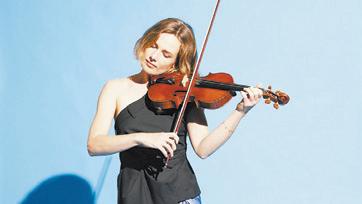

By Helen Musa
The German Film Festival has a reputation of coming up with thought-provoking movies that can set you on edge. This year is no exception.
Documentaries can do this better than anything else, with their fascinating assur ance that what you’re looking at is based in reality, for surely, the camera does not lie.
Top of the list in provocation this year is Riefenstahl, directed by Andres Veiel, which turns the spotlight on the notorious film maker Leni Riefenstahl, who enjoyed cozy relationships with Hitler and Goebbels.
She rose to international fame and no toriety with her films, Triumph of the Will, showcasing Hitler at the 1934 Nuremberg Rally and Olympia, her two-part take on the 1936 Summer Olympics in Berlin’s Olympic Stadium.
By Nick OVERALL

New streaming service Max has burst on to Aussie screens with the blockbuster second season of The Last Of Us.
It’s no coincidence this new player in the streaming game launched just a few weeks before the post-apocalyptic thriller returned for its second installment that millions around the world are hyped for.
Any viewers who watched the first season on Binge will now need to get a subscription to Max to continue the story.
Given that first season ended on a cliffhanger of seismic proportions, Max could not have timed its launch down under better. It will no doubt be hoping The Last Of Us will pull in an early wave of subscribers.
Is the show worth getting a subscription for?
Yes, it is.

Both are regarded as the absolute acme of propaganda filmmaking, but as the documentary shows, Riefenstahl was to claim that she was just an artist searching for pure beauty, not a believer in Nazi ideology.
She more or less got off the hook by being declared a Nazi sympathiser rather than a collaborator. She spent four years in a French detention camp before emerging, finding a much younger boyfriend in her cameraman Horst Kettner and reinventing herself, by photographing the children of Sudan’s Nuba tribe.
Director Veiel obtained access to Riefenstahl’s personal archives, so was able to follow her career and the narrative she would craft after World War II, by using archival interviews stretching from the 1960s to her death in 2003, her own films, and material from more than 700 boxes of records to both confirm and contradict her claims.
Riefenstahl was, even as an elderly woman, a fearsomely aggressive opponent in any public debate about her past, and is shown defending her reputation, denying knowledge of the gas ovens, claiming that Goebbels made unwanted moves of her,
but also admitting that when she first saw Hitler she was bowled over by his charisma.
The film won’t be an easy watch for anyone who believes in art for art’s sake, for Veiel presents a chilling reminder that total dedication to one’s art does not guarantee a secure moral compass.
Provocation, of course, need not be entirely grim and comedy abounds in the hilarious box office hit Two To One which, based on true events, follows a group of East Germans in 1990 as they pull off an entertaining heist of soon-to-be-worthless East German marks.
Fresh from the recent Berlin International Film Festival is Mehmet Akif Büyükatalay’s thriller, Hysteria, tagged by the critics as a “shrewdly scathing German whodunit”.
Taking a look at the power of images and social hysteria, the film features rising star Devrim Lingnau as a hapless second assistant director who tries to save a movie production that spins out of control when a copy of the Koran is burnt on set.
In Matthias Glasner’s epic Dying – that’s
the name of a composition for orchestra and choir – German actor Lars Eidinger plays an orchestra conductor at the Berlin Philharmonic. What happens there is already drawing comparisons to Cate Blanchett’s Lydia Tár, who had a meltdown on the very same podium.
And if all this sounds demanding, fear not, the Goethe-Institut’s Kino for Kids sidebar offers crowd-pleasers, such as Winners, the story of 11-year-old footballer and Syrian refugee Mona and Circusboy, a documentary that chronicles 11-year-old Santino’s experience growing up in a travelling circus family.
Much weirder, The Chaos Sisters and Penguin Paul, adapted from a popular book series, follows four chaotic sisters who work to save a dancing penguin from evil magicians.
And who can resist a dancing penguin on film?
that provides all the thrills that a post-apocalyptic wasteland can provide, while also being more emotionally and philosophically profound than something such as The Walking Dead, which at this point feels more expired that the corpses that hobble around in its endless prequels and sequels.
The Last Of Us, based on a best-selling video game series, is far more concise in its story telling and that’s what makes it fresh. The second season will only have seven episodes but as the saying goes: leave ‘em wanting more, not less.
SWEETENING the deal for anyone thinking about paying eight bucks a month for yet another streaming service is The Rehearsal.
Season two of the show will also be coming to Max on April 20. It’s one of the most peculiar spectacles on television.
Hosted by Canadian comedian Nathan Fielder, this show examines the lengths people will go to in order to reduce social anxiety.
Using a big TV budget, Fielder stages elaborate recreations of everyday scenarios that allow people to “rehearse” a social situation before facing the real thing.
This horror thriller series is set in the US 20 years after a virus has decimated the population by turning them into flesheating monsters. Not quite zombies, but pretty close to it.
Trying to eke out some kind of existence in this transformed world is Joel (Pedro Pascal), a smuggler haunted by the loss of his daughter amidst the chaos of the outbreak.
His life changes irreversibly when he meets Ellie (Bella Ramsey), a girl he’s tasked with safely transporting across the decrepit country for a purpose that could change the world as they know it.
Being a show produced by HBO, the production of The Last Of Us is impeccable on almost every front, but it’s the characters that make it stand out.
The relationship between Joel and Ellie is fascinating to watch unfold, given the implications it holds for all those around them. Pascal and Ramsey make it work. The roles demand full emotional commitment and this duo takes it all the way.
I’ll leave it there, so as not to go into spoiler territory, but the result is a show
Take a first date in a bar for example. Everything from the drinks, the staff, even the very smell of the venue is built inside a studio. The scenario is carefully crafted right down to the most obscure of details to create the ultimate simulation for someone who wants to practice how they’ll approach the romantic encounter.
The line between reality and fiction soon gets blurry. The relationship Fielder builds with those who have come on the show to “rehearse” become plotlines in of themselves.
With season two it looks like the budget to create these crazy scenarios had been lifted, allowing for recreations of even more absurd accuracy.
In an era where there is such an overwhelming volume of content out there doing something truly different has never been more difficult, but Fielder’s bizarre creation is one that is truly original.
With The Rehearsal he’s built an uncanny mirror of our daily social experience. The reflection is uncomfortable to look at, yet impossible to turn away from.
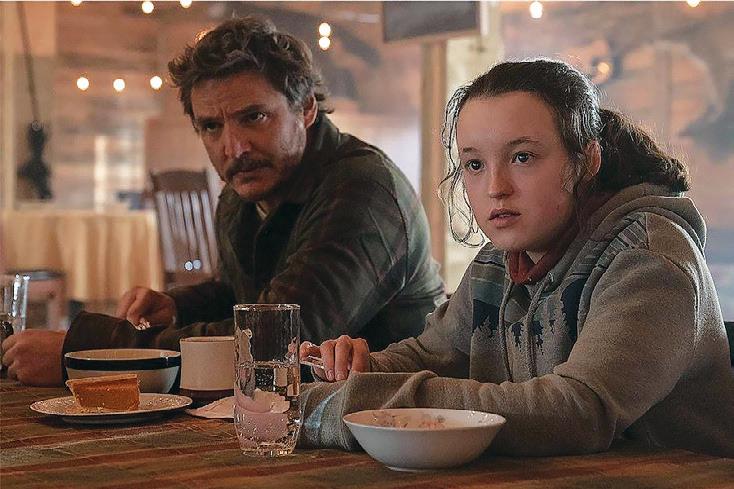
It’s the special touches that count for hospo veteran and chef Nicky Kim… like making your own smoked salmon for eggs benedict. It may take more time, but it produces better results.
We hit Nicky’s at Dickson around lunchtime on a weekend, feeling peckish and curious about what the menu would offer. It kicks off with toast, which includes house-made focaccia ($8) and a sour cherry and sultana loaf ($9).
The porridge, soaked in almond milk and cinnamon and loaded with fruit and toasted nuts and seeds ($15), will be popular now that the cooler weather is upon us.
We were after something more substantial, and my taste buds begged me to select the smoked salmon benedict. I love a good “eggs benny” but rarely order it since I often find two eggs with hollandaise sauce a tad rich and overwhelming.
Nicky’s has been super smart and offers a half serve so I couldn’t resist (full serve $24; half $15). The eggs were poached perfectly and the hollandaise was creamy, nicely tangy, and not too rich. Love, love, love.
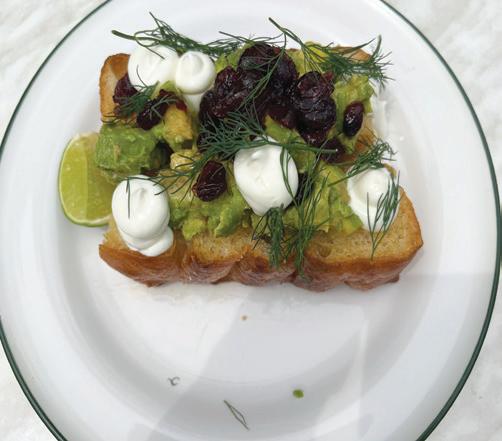
My friend was attracted to the avocado dish, which looked as gorgeous as a dessert ($19). The creamy, perfectly ripe avo was “decorated” with dollops of labneh and rehydrated cranberries for bursts of flavour and colour.
On top were fresh fronds of dill and the dish arrived with a wedge of lime, adding acidity and sensible balance. The toasted house-made focaccia (almost like a brioche) was nicely cut up, making eating a breeze.
We shared a side of bacon (reasonably priced for the serve at $6.50). While it was high in taste,
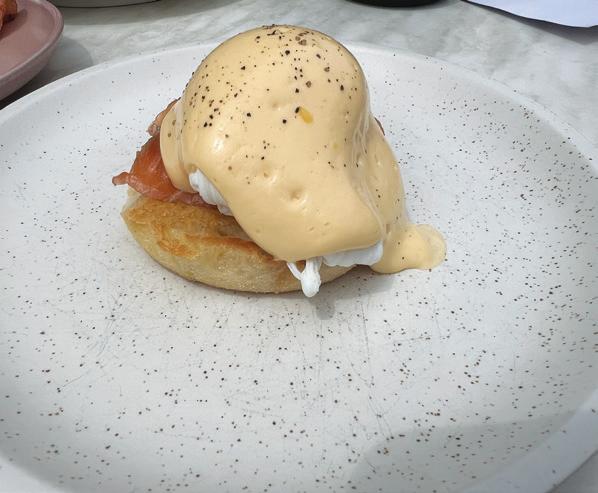
Although we didn’t indulge, we’ve heard the Scotty’s chicken burger is delicious and popular, made with Nashville seasoned fried chicken, coleslaw, chipotle, aioli and cheese on a toasted milk bun ($20).
Nicky’s serves quality, local Redbrick coffee. Cold drinks include the popular Allie’s Cold Pressed Juices ($7), a family-owned business. We appreciated the all-natural approach, the use of 100 per cent Australian fruit and veg and no added sugar. I selected the Love Beets (beetroot,
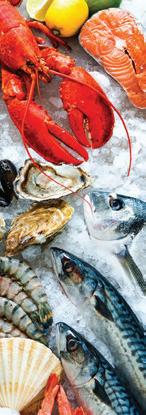
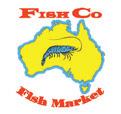

displayed near the cash register at the front. We initially found it tricky to find Nicky’s and wandered for a bit to find 28 Challis Street. Hint: The café is diagonally across from the Dickson Taphouse. No bookings… just walk-ins.
In the recent pre-election Budget the federal government announced a minor change to the way in which wine is taxed.
Eligible wine producers currently receive a Wine Equalisation Tax (WET) rebate of up to $350,000. This cap will increase to $400,000 from July 1 2026. But what on earth does this mean and what is the WET?
The WET is a tax that affects Australian wine importers, producers and wholesalers and eligible NZ winemakers.
It is an historic relic, introduced in conjunction with the GST to maintain a tax treatment for wine roughly consistent with the previous wholesale sales tax regime that was in place before 2000. There is a rebate from the tax that applies to wine producers. A rebate is a tax offset: in other words, the amount of the rebate is deducted from the tax payable rather than reducing taxable income (which would normally be described as a tax deduction).

WET is linked to the dealing with (inclusive of wine made available for tasting) or selling wine. The tax is calculated on the value of the wine. WET is levied at 29 per cent of the wholesale value of wine.
The tax applies where the business is or should be registered for GST. This is where a business has a turnover of $75,000 or more. GST is then calculated on the price of wine you sell/deal with inclusive of the WET, so there is another tax on the taxable component of the wine. Wine importers pay WET despite any GST registration requirements.
There are some complex rules to adhere to if the wine producer makes retail sales (eg, directly from the cellar door).
These are an average wholesale price calculation or the half retail price method. The latter method of calculation is mandatory if wine is made from something other than grapes (eg, plum wine or sake as it is made by fermenting rice). That calculation requires you to work out 50 per cent of the retail sale price inclusive of WET and GST and then you multiply that amount by 29 per cent to get to the tax payable.
The average wholesale price method is complex because the wine business is required to calculate the relative proportion of each type of wine sold, and also any discounts, incentives or similar that may reduce the wine’s selling price.
The producer rebate that is due to increase to $400,000 applies if the wine business meets certain eligibility criteria. Again, this is governed by some detailed rules. First, different criteria apply depending on when the winemaking process started. The wine business needs to determine
whether your wine is:
• 2018 and later vintage wine (more than 50 per cent of the grapes used to make the wine were crushed from January 1 2018)
• 2017 and earlier vintage wine (more than 50 per cent of the grapes used to make the wine were crushed before January 1 2018).
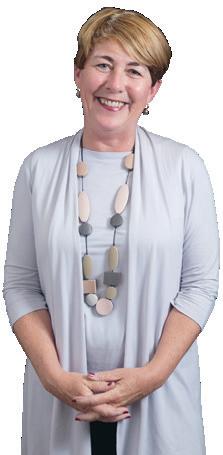
For simplicity, let’s just focus on the 2018 and later vintage wine. To be eligible the business must meet these four requirements:
Be the producer of the wine, noting that you are not a producer if you simply purchase bulk wine and bottle it for sale.
• Be liable to pay WET or sell the wine under quote to a purchaser who declared in the quote that they will be liable for WET on a subsequent dealing in the wine.
• Own the source product (for example, whole unprocessed grapes, apples, pears, other fruit or vegetables, honey, and rice) that makes up at least 85 per cent of the total volume of the wine throughout the wine making process; and
• Sell the wine in a container with a capacity of five litres or less (which may differ for some products eg, 51 litres for cider) that is suitable for retail sale and branded by a trademark owned by the business or an associated entity.
Tax on alcohol in Australia, inclusive of the WET, is crying out for reform. Indeed, the Henry Tax Review (2010) said: “Current tax and subsidy arrangements for alcohol are complex, and distort production and consumption decisions with no coherent policy justification.
“In particular, the wine equalisation tax, currently designed as a value-based revenueraising tax, is not well suited to reducing social harm.” Amen.

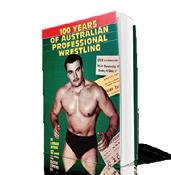
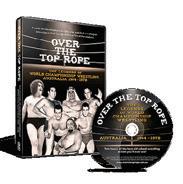
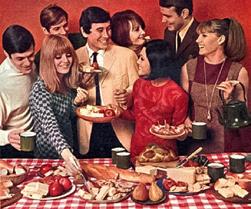
•


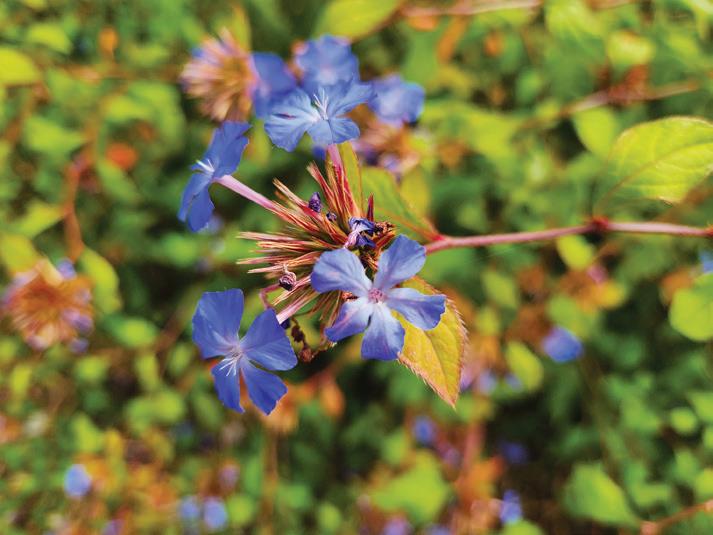

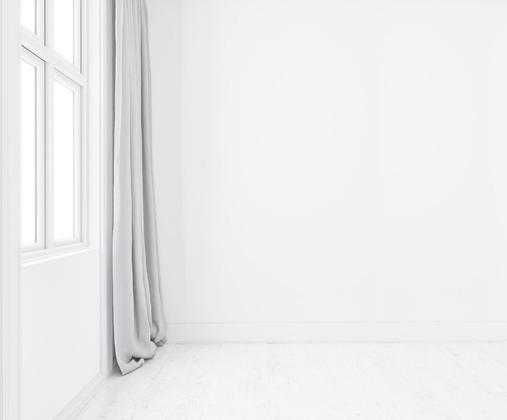
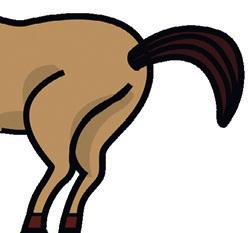

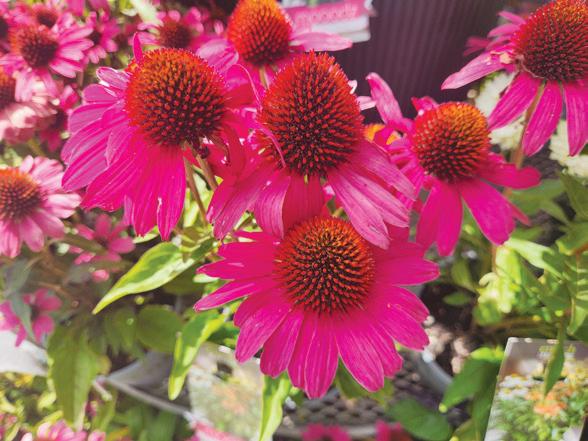
By Jackie WARBURTON

My hero plant this week is Chinese plumbago, a deciduous shrub that grows well in our region. Its flowers are in bloom now. They are the most amazing cobalt blue colour and once the autumnal foliage begins to turn red, the contrast is really lovely and has a long-lasting summer and autumn display.
Chinese plumbago (ceratostigma plumbaginoides) can be used as a small hedge. It has a slow suckering habit that can be clipped into shape. It grows best in full sun, where it flowers well.
There is a new, smaller, powderblue flowering variety available
called Summer Sky, which grows under a metre tall.
WE are still in a busy period in the garden with lots to do – planting garlic, green manure crops and all winter vegetables, which need to be in the ground before the soil cools at the end of the month.
Pull weeds to keep them from setting seed and lying dormant over winter in the soil. Place them into the compost and keep moist and turned over through winter.
Autumn leaves need to be picked off the tops of hedges to prevent damage and the last of the pruning for evergreen hedges should be done now, except for viburnum tinus, which flowers in winter.
IT’S also a great time for dividing and moving plants around. Conifers can do with a tidy up of all the
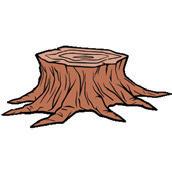
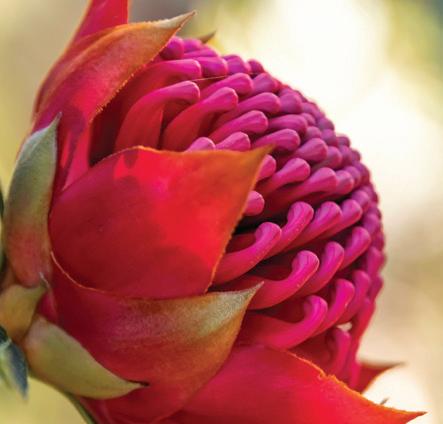
brown needles from inside the shrubs to help with airflow and use those pine needles around strawberry and blueberry plants to help keep the soil acidic.
REDUCE fertilising plants as the weather cools. Now it is time to work on garden soils over winter. Tilling soil is good for controlling weeds and pest control.
Adding manures and mulch over the winter to garden beds will help the soil microbes to work and plants will be ready to grow as soon as spring arrives.
Spraying for peach leaf curl can be done now and, if possible, remove as many fallen leaves as possible from under the tree and dispose of them in the green bin and not the compost.
Spray with copper oxychloride and ensure all the leaves are wet on the undersides as well and allow them to dry before watering.
I like to also alternate with lime sulphur if there has been an aphid infestation. It is stronger than copper, but unfortunately a little on the nose. However, the smell goes away after a day or so.
Lime sulphur is not suitable for apricots, berries and grape vines, but it is useful for spraying roses once they have lost their leaves.
THE humble echinacea plant has come back in vogue with new varieties.
With a similar flower shape to sunflowers (they’re from the same family – Echinacea plumbaginoides), they’re in bloom now. It’s a long-lasting plant through summer into autumn and terrific for attracting pollinators.
There are now varieties available with wonderful compact growth that die down as a herbaceous plant in winter and regrow in spring. Echinacea is a rhizome and can be divided around late winter into early spring.
jackwar@home.netspeed.com.au
• Plant winter colour such as polyanthus, primulas and pansies.
• Prune grape vines before they bleed.
• Place a bag of manure to the compost to help with decomposition.
• Start to fertilise bulbs that are beginning to grow.
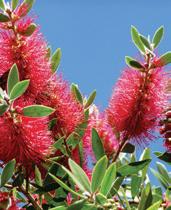
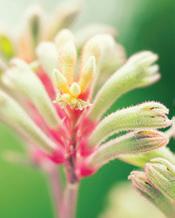
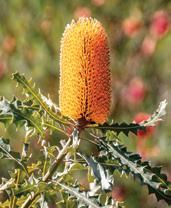


By Joanne Madeline Moore
ARIES (Mar 21 – Apr 20)
The week starts with a promising bang, as lucky Venus and inventive Uranus activate your cash zone. So – when it comes to money matters – being adventurous and innovative could pay off. As long as you are not ridiculously rash or unreasonably argumentative (which you probably will be, as Mars squares the Sun and opposes Pluto). Your motto for the moment is from birthday great, writer Charlotte Bronte: “Look twice before you leap.”
TAURUS (Apr 21 – May 21)
This week you’ll feel the positive effects of the Sun and Uranus (both in Taurus) plus your ruling planet Venus (in Pisces). So avoid getting stuck in a static way of thinking and a routine way of behaving. A current situation (or problem) has more flexible options and exciting possibilities than you previously thought. Wisdom for the week is from movie star (and birthday great) Barbra Streisand: “I just don’t want to be hampered by my own limitations.”
GEMINI (May 22 – June 21)
You’ll be at your sociable, gregarious Gemini best – especially at work. You’re keen to have fun but, when it comes to close relationships, resist the tendency to be superficial. Mercury links up with perceptive Pluto, so there’s a lot more going on beneath the surface than meets the eye. Slow down, observe, listen and learn. In the words of To Kill a Mockingbird author, Harper Lee: “You never really understand a person until you consider things from their point of view.”
CANCER (June 22 – July 23)
This week the planets stimulate your urge to splurge on extravagant purchases that you don’t really need. So perhaps it would be best to avoid spontaneous spending sprees… both in person and online. Other possibilities? You could become drawn into a heated argument over money, possessions or an inheritance. Or you could find yourself consumed by obsessive love, secret desires or jealous thoughts. So simmer down and tread carefully, Crabs!
LEO (July 24 – Aug 23)
Prepare for a colourful, combustible week, Cats! On Monday, the Sun/Mars square amps up your bossy side and then the mid-week Sun/Pluto square stirs up a tricky relationship with a loved one or work colleague. So make sure you confiscate all sharp implements and choose your words wisely, as people (including you) will be quick to anger and liable to make mountains out of molehills. Friday favours business planning and catching up with an old friend.
VIRGO (Aug 24 – Sept 23)
Work stress, health problems, a secret obsession or a lack of sleep could unsettle you this week. You’ll find nutritious food, vigorous exercise, regular relaxation and walking in nature will help to calm your sensitive, highly-strung Virgo nature. And don’t worry about what other people are doing and where they’re going. You have to run your own race, in your own time. A long-term relationship (romantic or platonic) brings a sense of peace and reliability.
LIBRA (Sept 24 – Oct 23)
This week’s tricky Sun/Mars/Pluto aspects could reactivate a festering friendship issue that’s been brewing and stewing. A large dollop of Libran diplomacy – and a heap of humility – will get you through. The good news? Destiny is around you, and fate could lead you to a special new contact at work. Be proactive and adventurous. As actress (and birthday great) Shirley MacLaine wrote: “Don’t be afraid to go out on a limb. It’s where all the fruit is.”
SCORPIO (Oct 24 – Nov 22)
It’s an intense week for Scorpios! Pluto (your ruling planet) squares the Sun and then opposes Mars, which could amp up your control-freak tendencies and magnify your compulsive side. You’re determined to win an argument or solve a problem but don’t play power games and step on other people’s toes in the process. And avoid getting stuck in a stultifying rut. You’ll find less confrontation and more cooperation will get you where you want to go.
SAGITTARIUS (Nov 23 – Dec 21)
Many Sagittarians are independent operators, fiery communicators and masters at juggling multiple projects. But things could go haywire this week, as the planets complicate communication, travel or work plans. Don’t let it deter you. Think things through carefully, consult widely – and then grab opportunities with both hands! Your motto is from birthday great, Barbra Streisand: “Every setback is an opportunity to come back stronger.”
CAPRICORN (Dec 22 – Jan 20)
This week you’re keen to help, but do other people require your bossy suggestions and well-meaning assistance? Be careful you’re not just being a fussy and finicky control freak! And if you are too quick to critique others, then you could find yourself with a moody child, a fractious friend or a cranky colleague on your hands. Praise and encouragement will always get you a lot further than criticism, no matter how ‘constructive’ it is.
AQUARIUS (Jan 21 – Feb 19)
This week, Pluto (in Aquarius) squares the Sun and opposes Mars, leading to some uncomfortable home truths about how you relate to your nearest and dearest. Don’t blame other people for current challenges and roadblocks! Take a close look at what you’re doing – perhaps you are the problem? Look within for the answers. As actress (and birthday great) Shirley MacLaine observes: “The most profound relationship we will ever have is the one with ourselves.”
PISCES (Feb 20 – Mar 20)
Venus and Saturn are currently transiting through your sign. Venus could make you feel attractive, lucky and loved – while Saturn could amplify feelings of doubt and low-self-esteem. Don’t stress and procrastinate, Pisces! Wisdom for the week comes from birthday great Barbra Streisand (who turns 83 on Thursday): “Doubt can motivate you, so don’t be afraid of it. Confidence and doubt are at two ends of the scale, and you need both. They balance each other out.”
Copyright Joanne Madeline Moore 2025

2 To respond, is to do what? (5)
3 Port-au-Prince is the capital of which West Indies republic? (5)
4 What is the ancient name of Manisa in western Turkey? (8)
5 What is the Australian Council of Trade Unions (init)? (4)
6 To state as true, is to do what? (6)
7 Name a horse not expected to win. (6)
12 What are numbers of persons arranged in lines? (4)
14 Which figure is used in writing, as a reference mark? (8)
15 What is a pitcher with a wide spout? (4)
17 Name the tube of a gun. (6)
18 What is a plan for achieving a desired end? (6)
20 To be silent, is to be what? (5)
21 Who was told to “get her gun”? (5)
23 Which term is used after a prayer? (4)
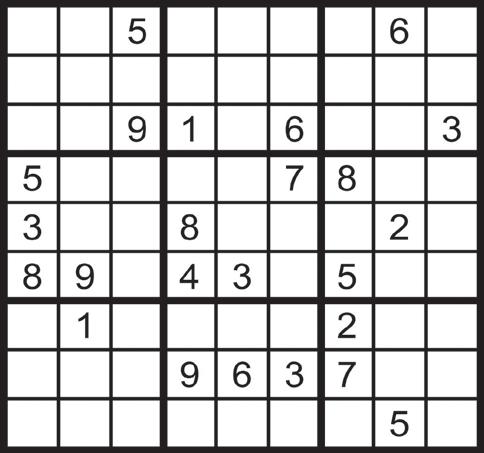
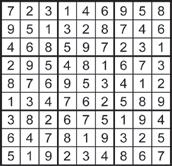
Passion for trading cards, coins and other choice collectables has built fortunes big and small for millions of Australians, a new report suggests. When it comes to collecting ‘em all, Asif Mir is living his childhood dream.
The 31-year-old from western Sydney has turned his passion into a booming career, amassing a collection of trading cards ranging from Pokémon to Dragon Ball Z, Star Wars and Power Rangers worth more than $1 million.
About one-in-three Australian adults are collectors, equating to 7.6 million of the national population according to a report by eBay and Deloitte Access Economics.
The median Australian hobbyist has 50 collectables worth a total of $2200, based on a survey of 2000 collectors.
Expanded to the entire population, the report estimates Australians own about 380 million collectables at a price tag of $16.8 billion.
Mr Mir’s hobby began in 2019 with a few shelves, folders and boxes but more than five years on, his collection has grown exponentially.
“Every single room (in my house) is covered in Pokémon,” he said.
Mr Mir quit his job as a sign language interpreter to pursue the passion full time, making him upwards of $2 million in the past five
years which allowed him to buy a house with the money.
Genuine love for the items and nostalgia are the top motivators for collectors, the report said, but costof-living pressures have seen some turn to the hobby for extra support.
About one-in-five collectors surveyed have turned their passion into a financial endeavour, while 35 per cent said they collect because the item is a good investment. Collectors reaped a median profit of $5400 in the last year and $13,000 over the past three years – up from the $5000 to $10,000 median profit in the three years prior to 2023. Coins are the most popular collectable followed by toys, pre-loved fashion items, and antiques, while trading cards amount to some of the most expensive collectables on eBay.
Collecting trading cards has evolved from a childhood pastime to a serious hobby driven by nostalgia, with the potential to become a rewarding investment, eBay Australia’s Alaister Low said.
“It’s an exciting world where passion meets investment, and the thrill of the hunt for those elusive cards continues to grow,” he said.
